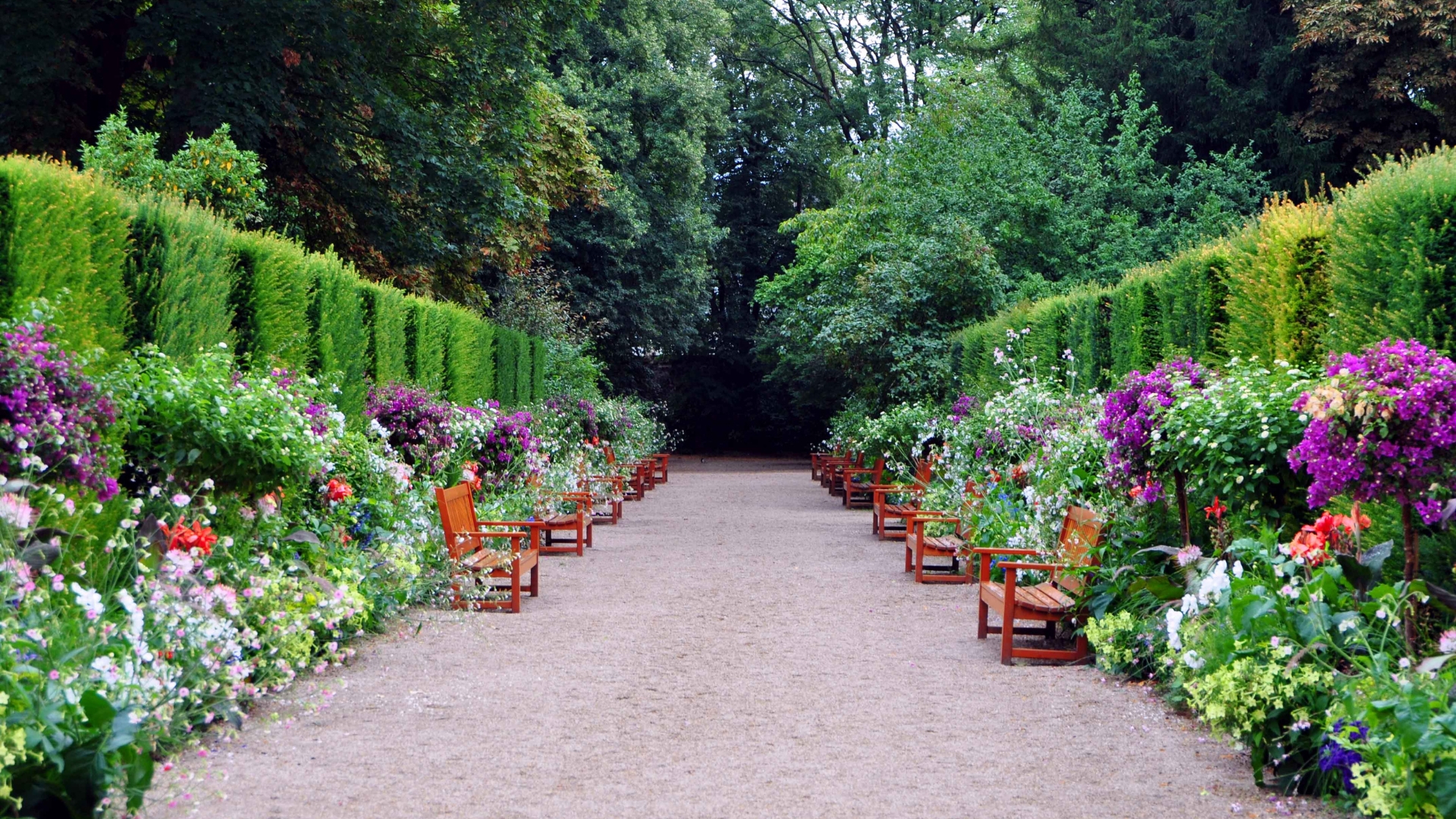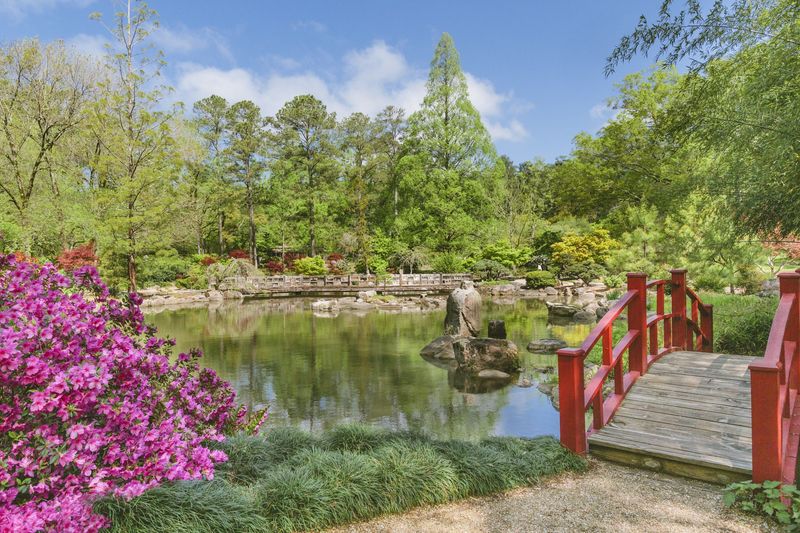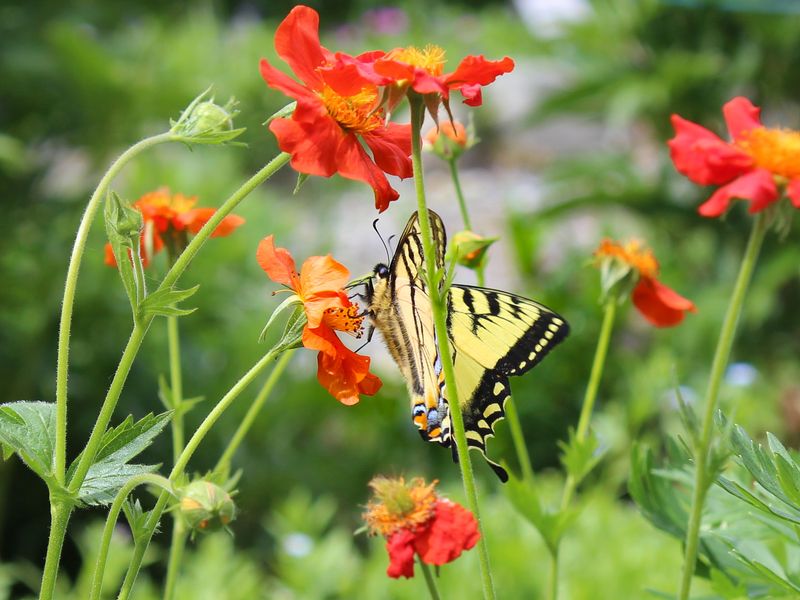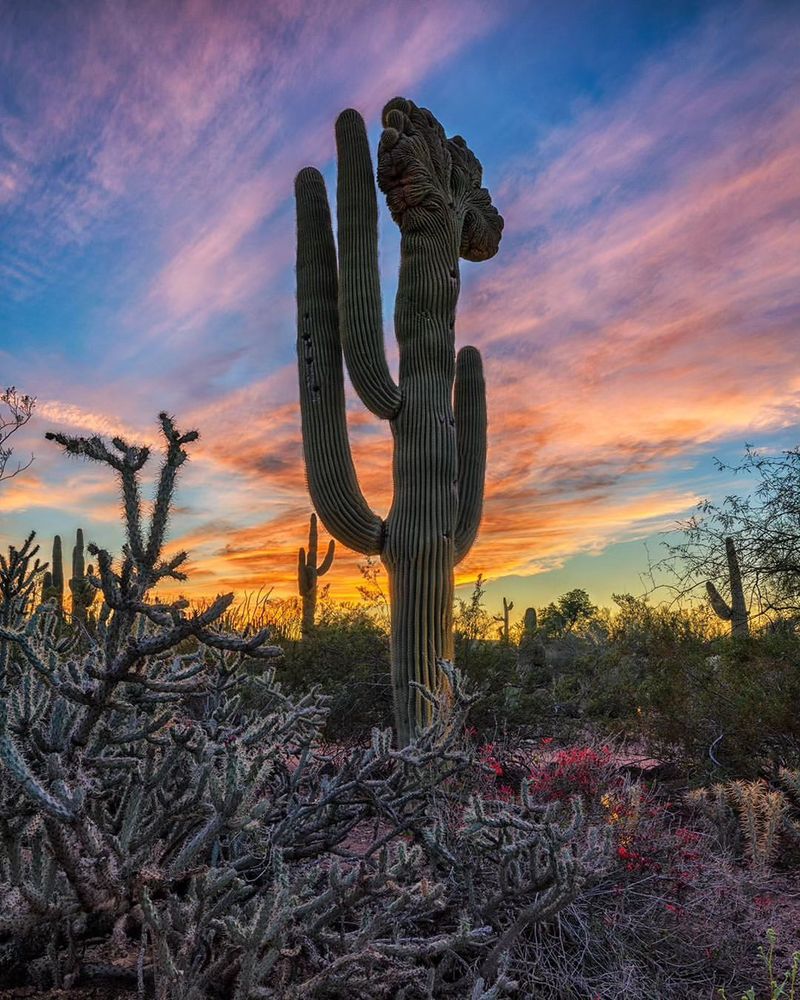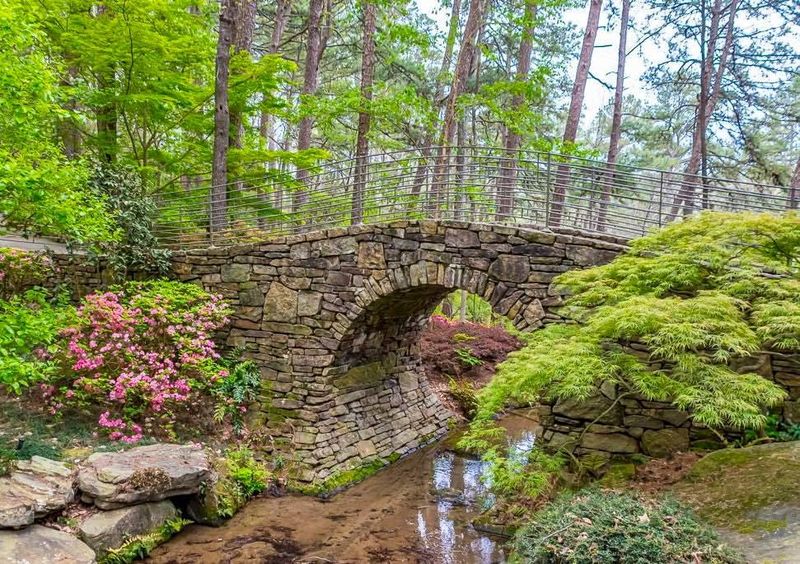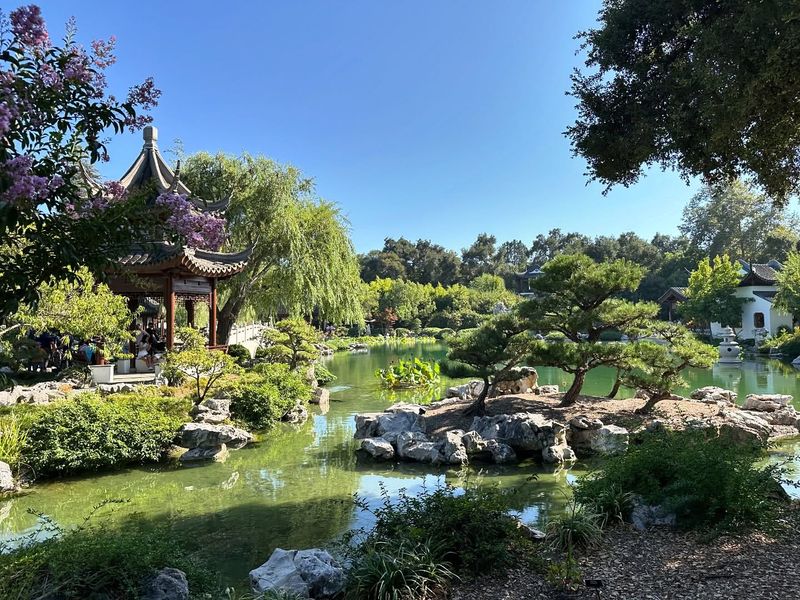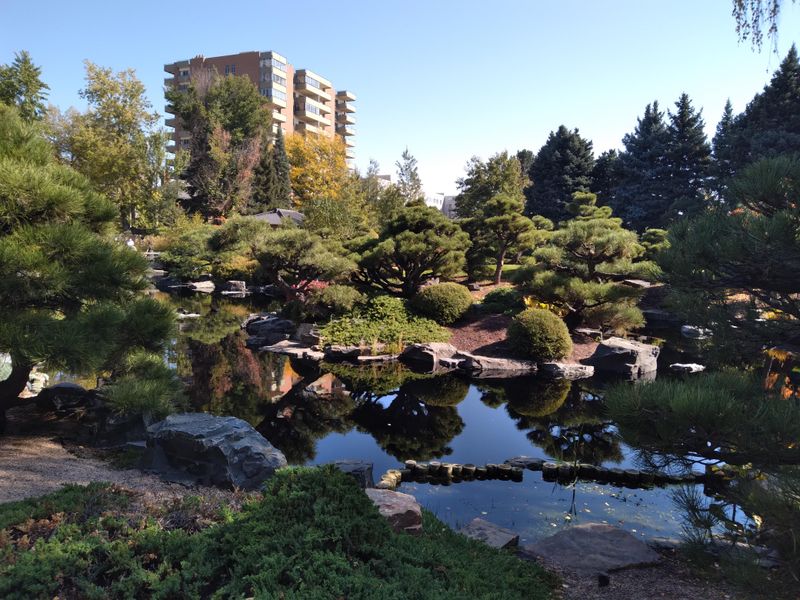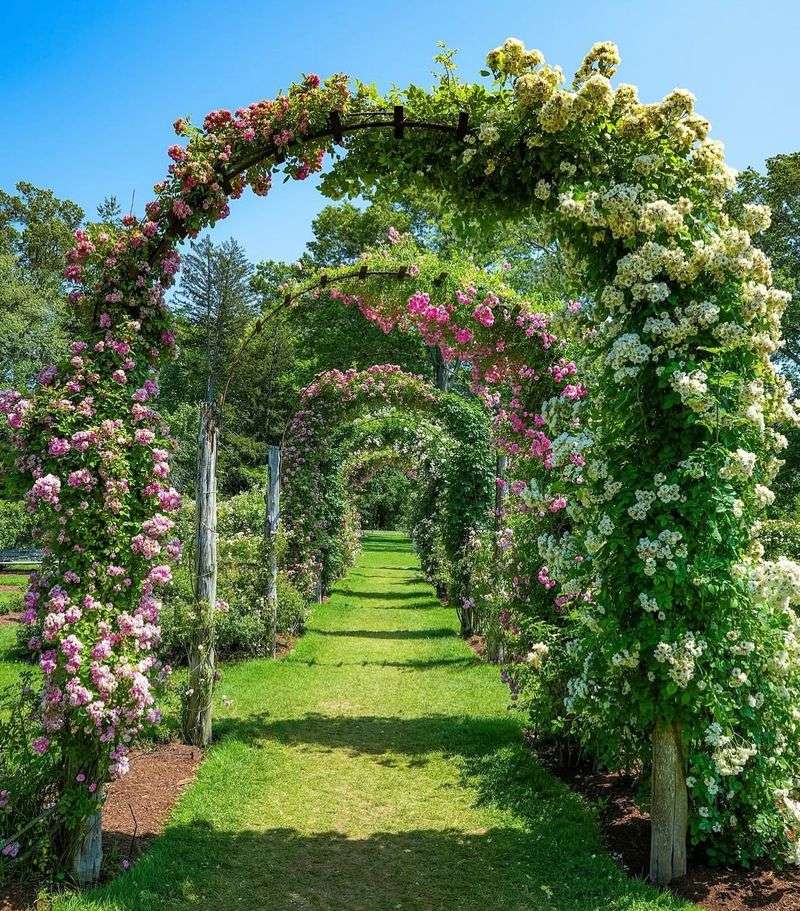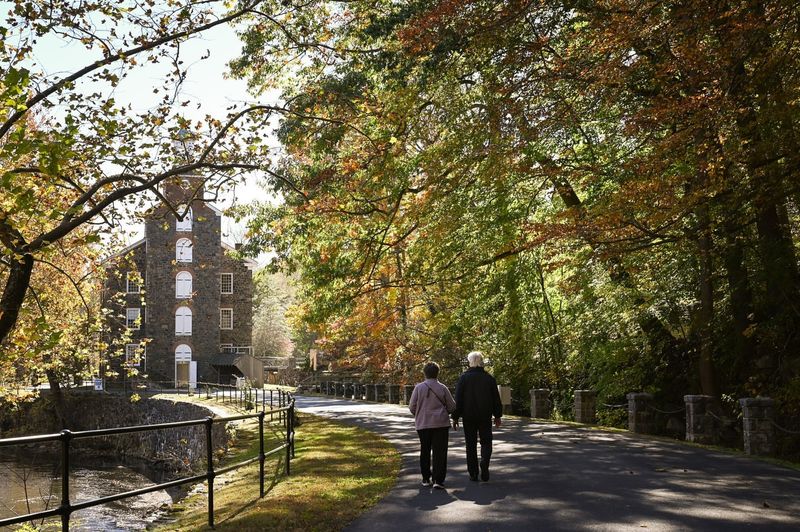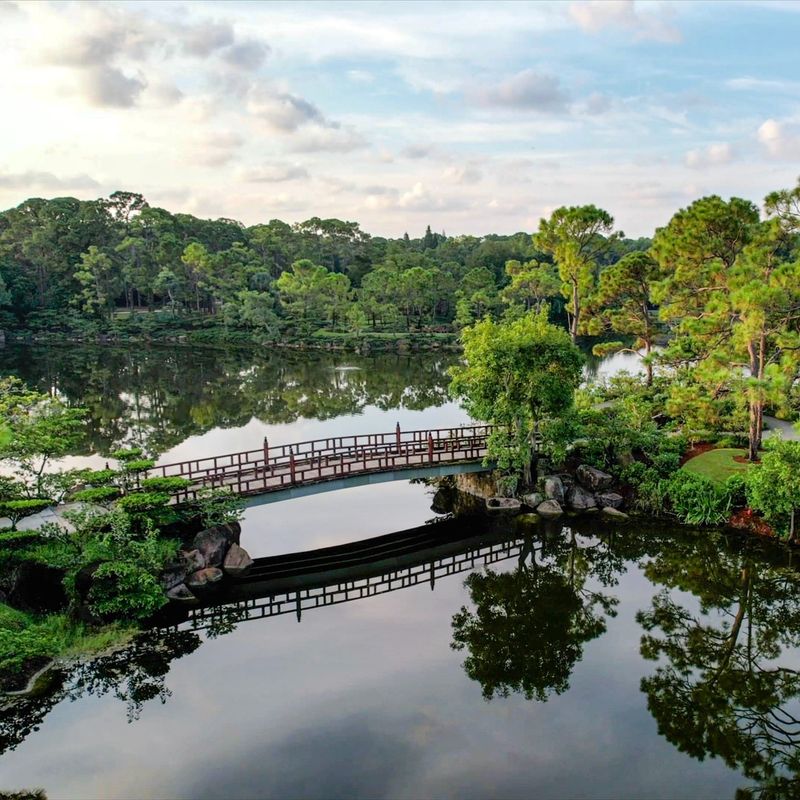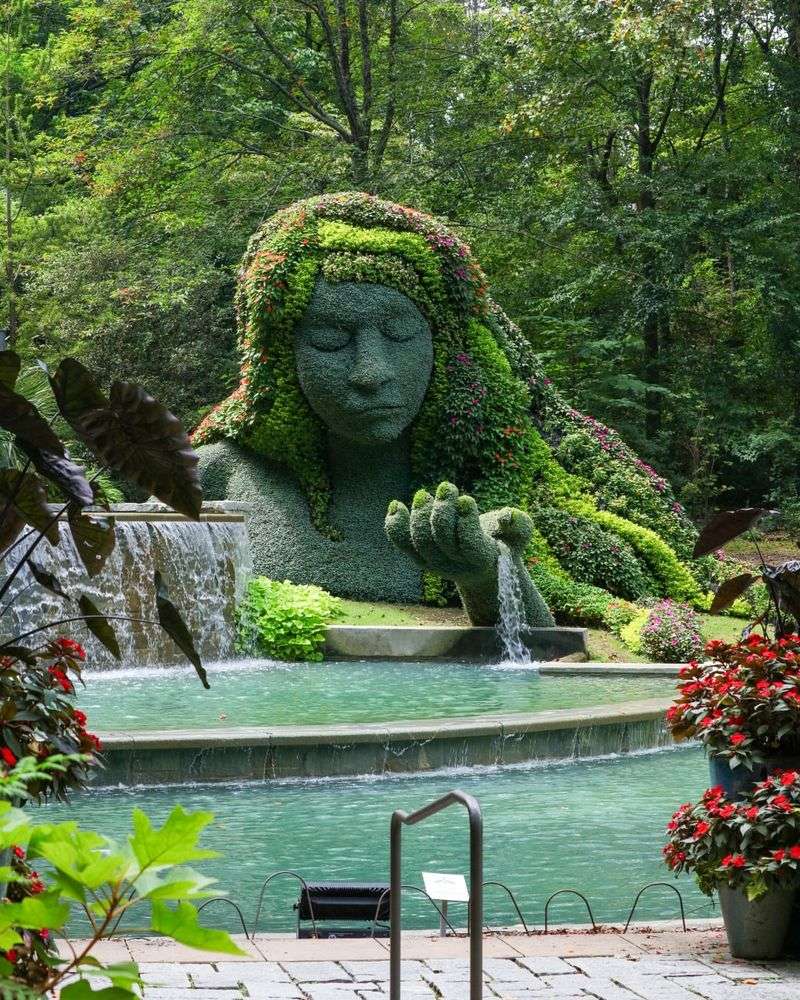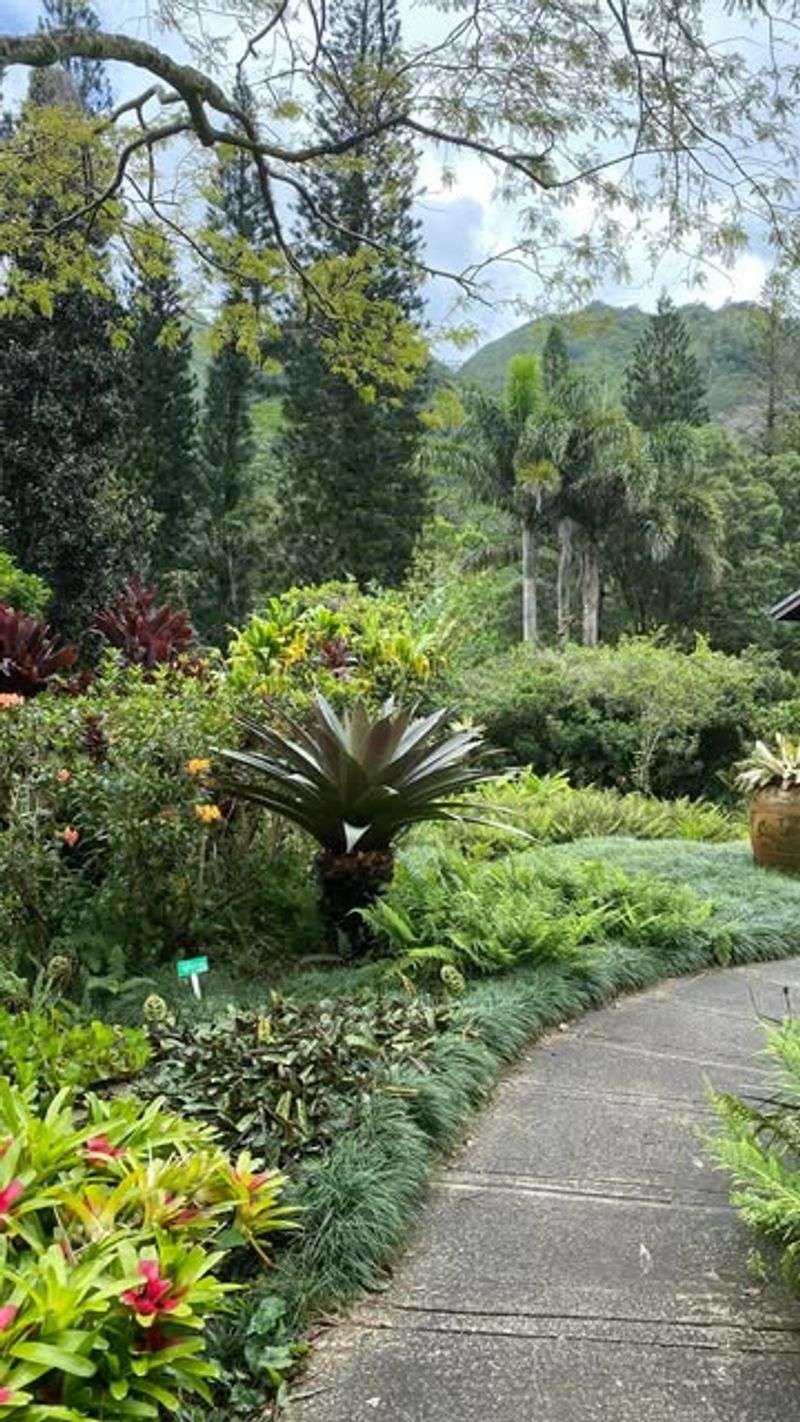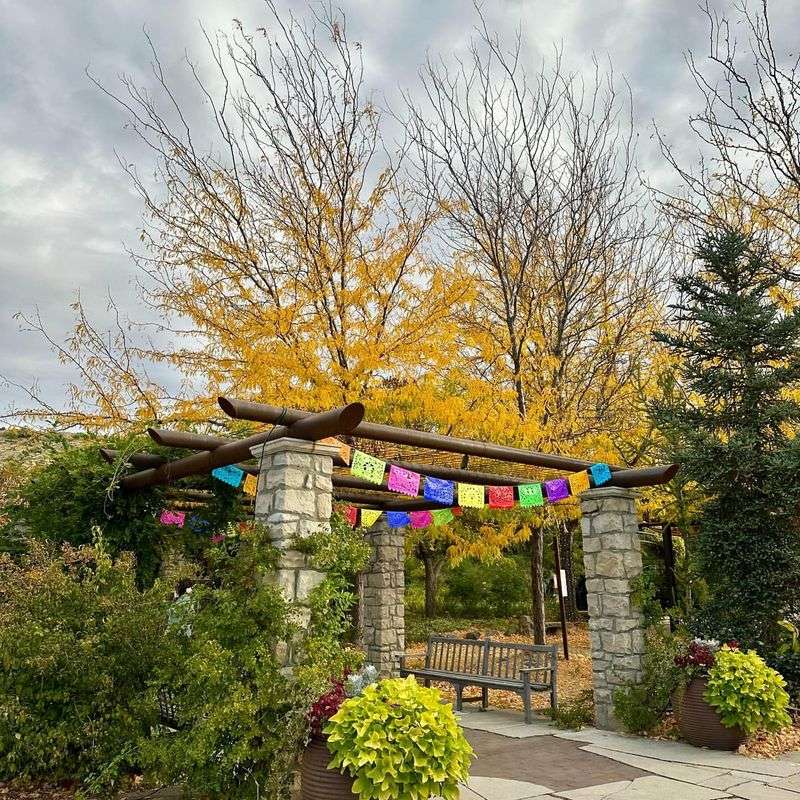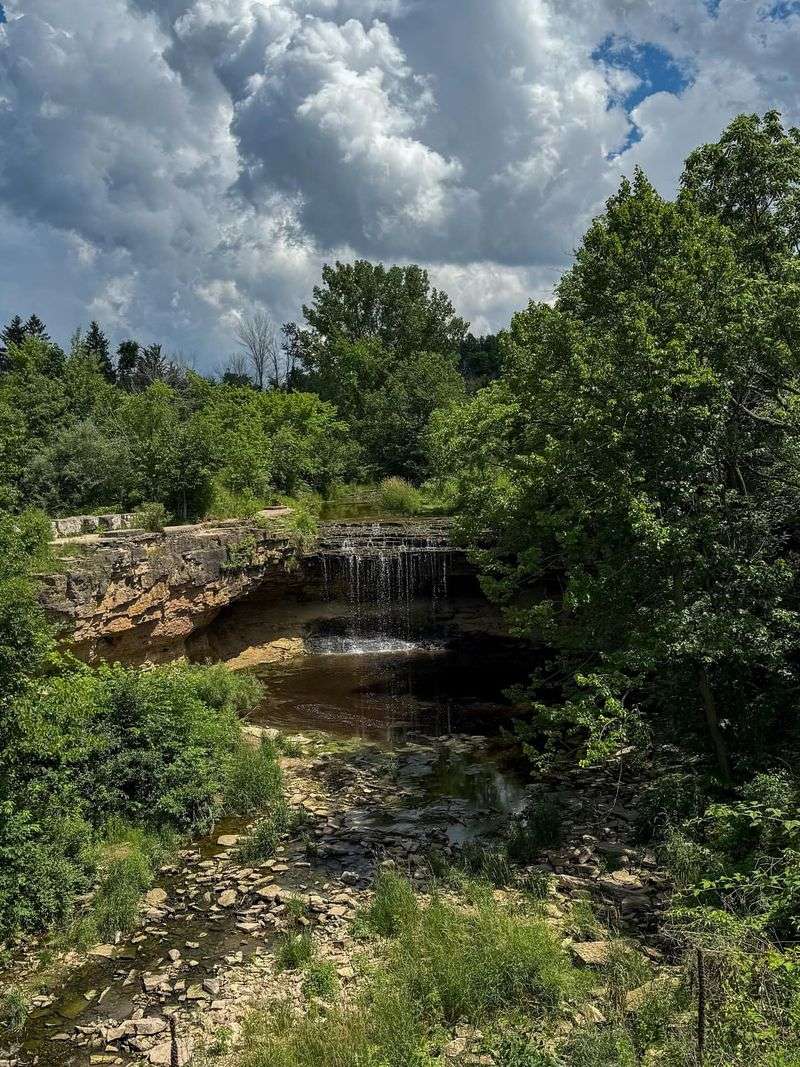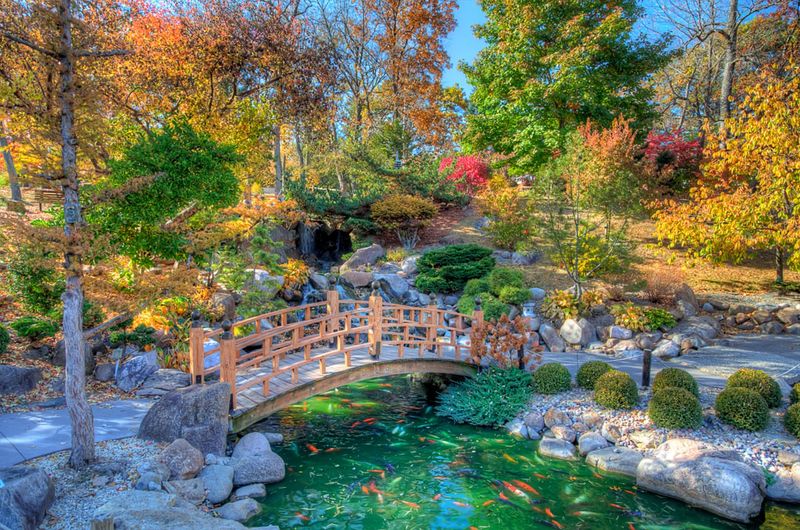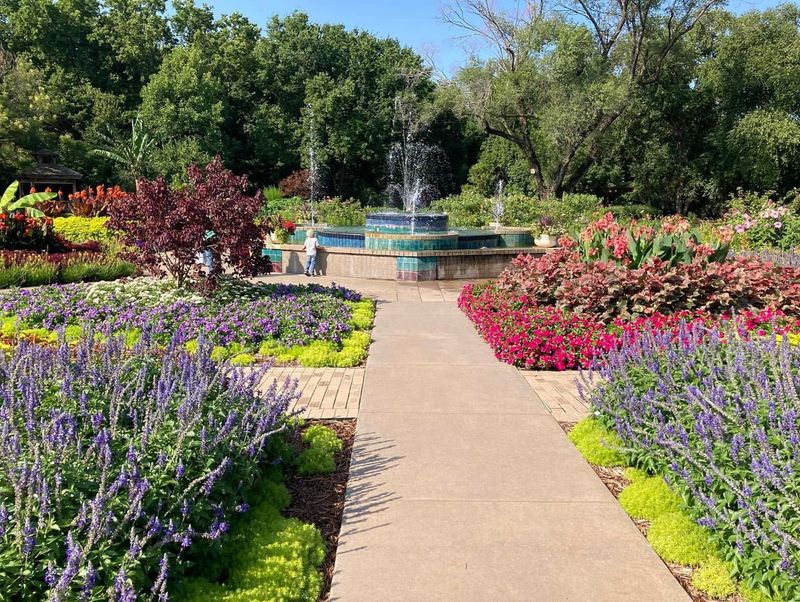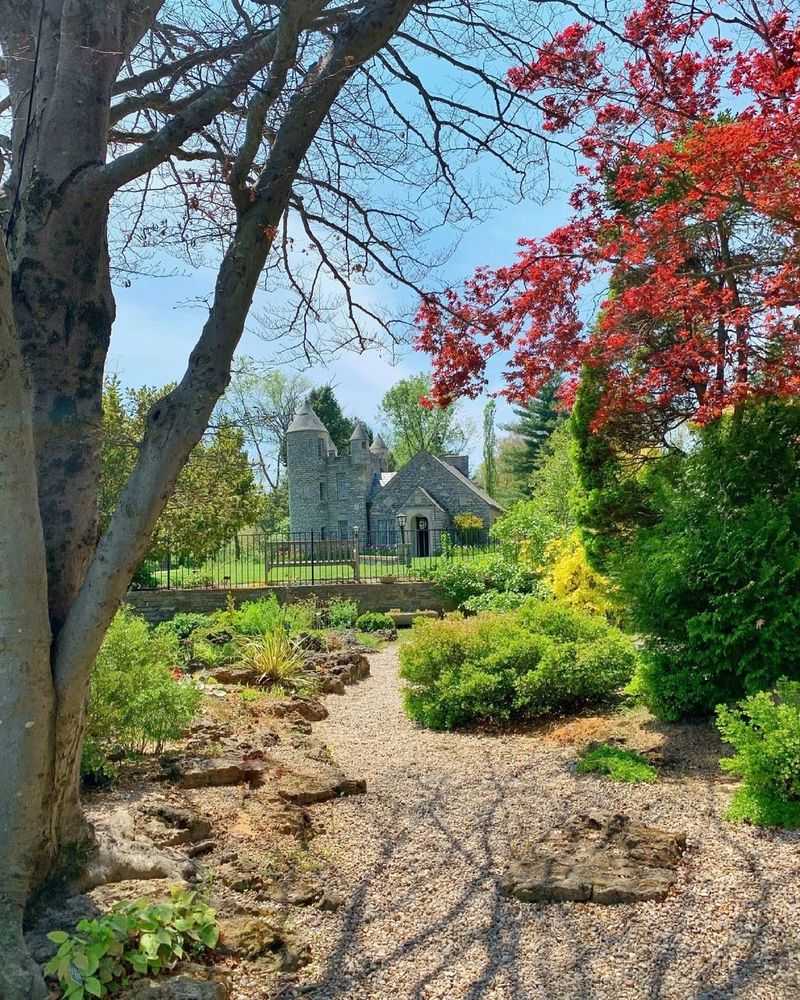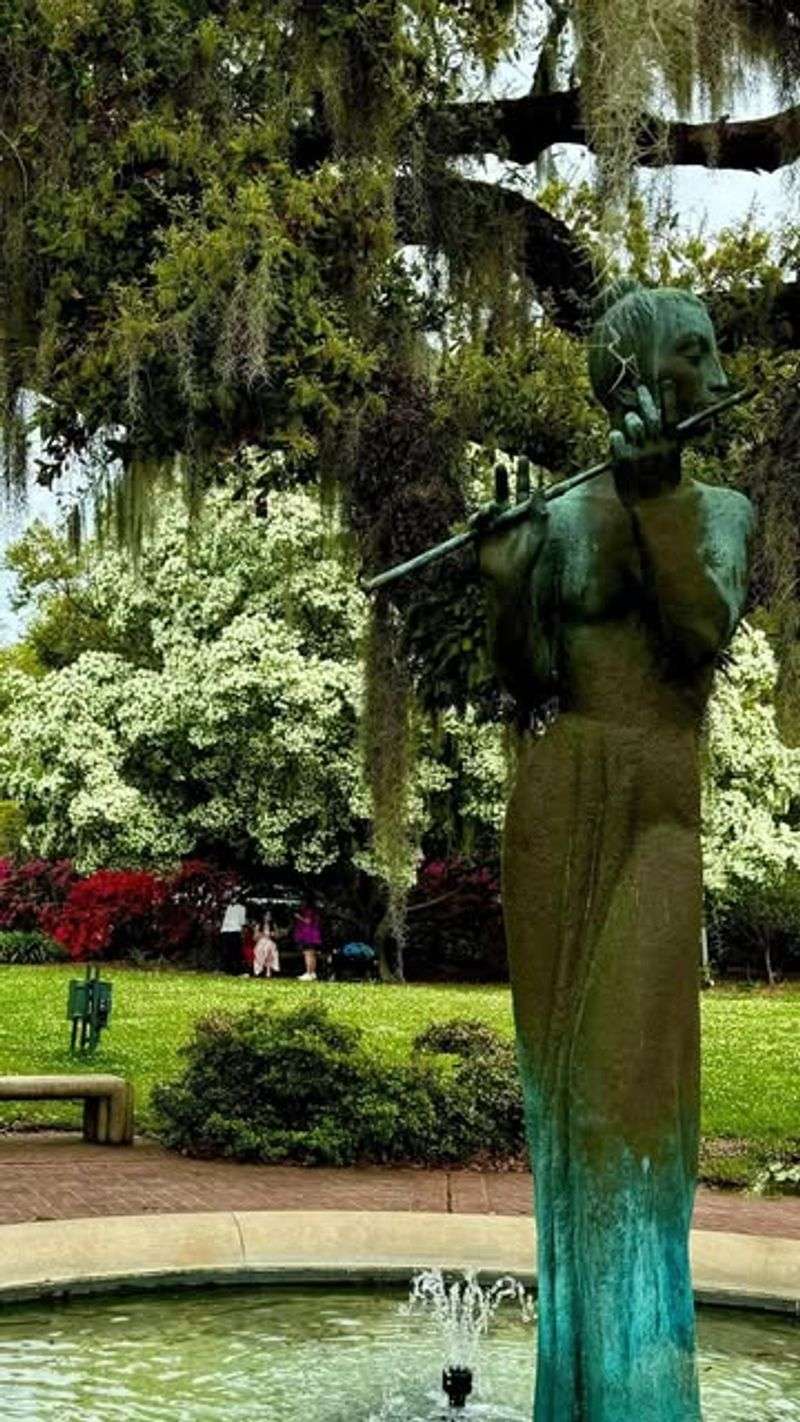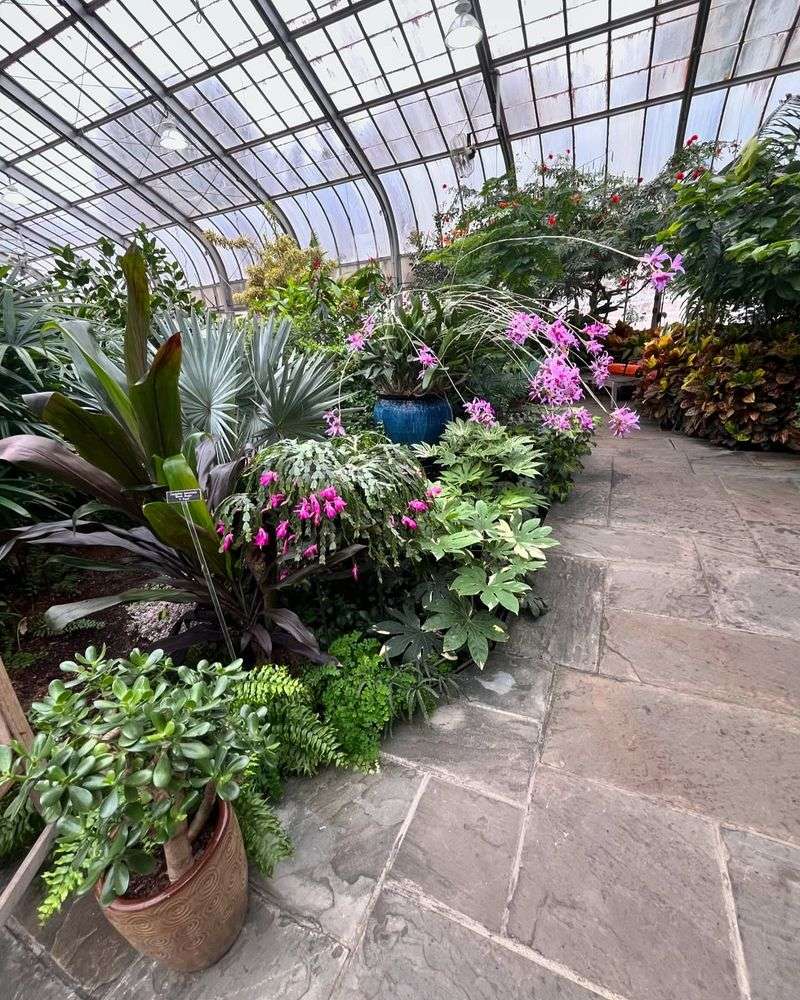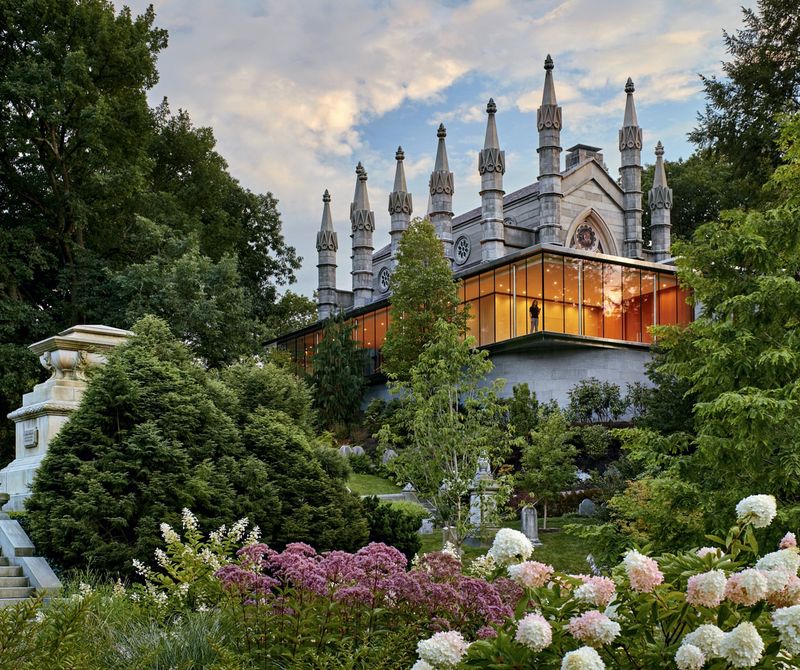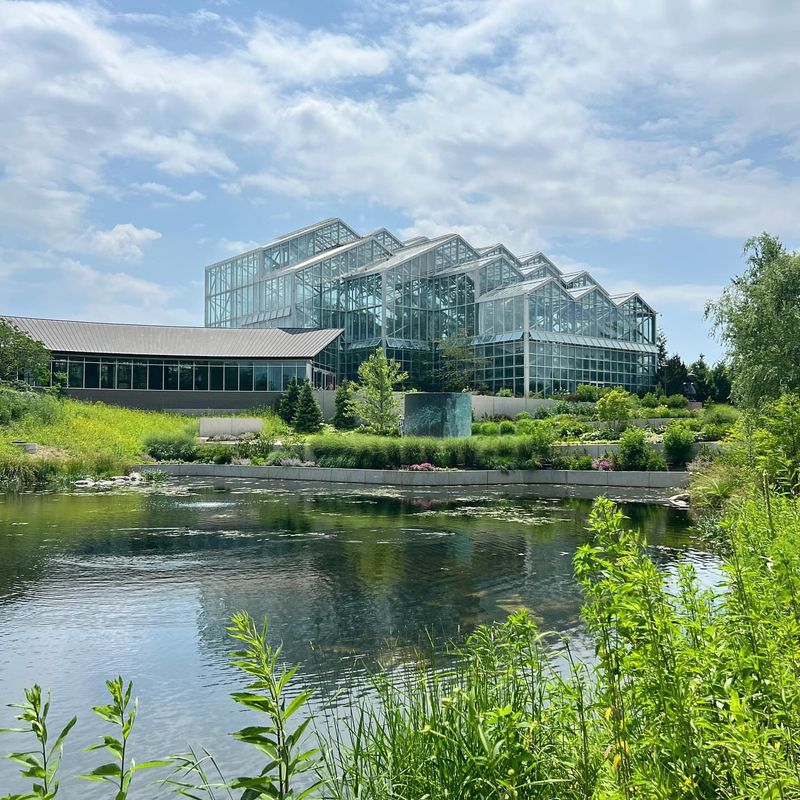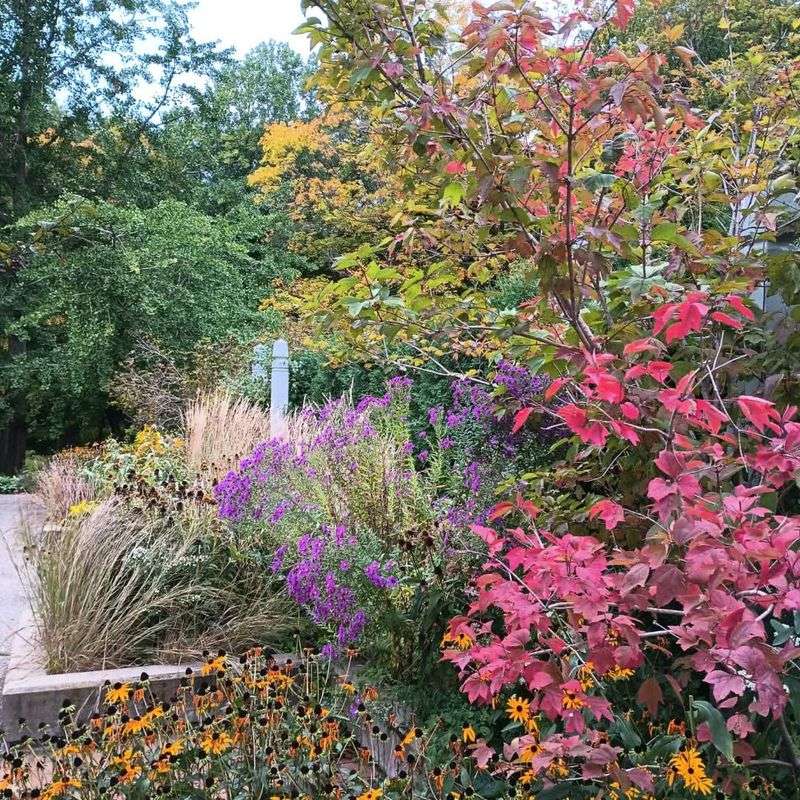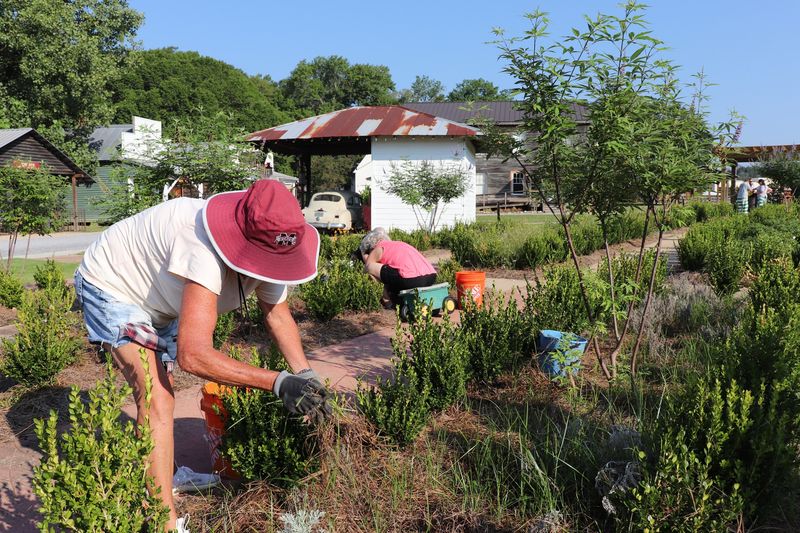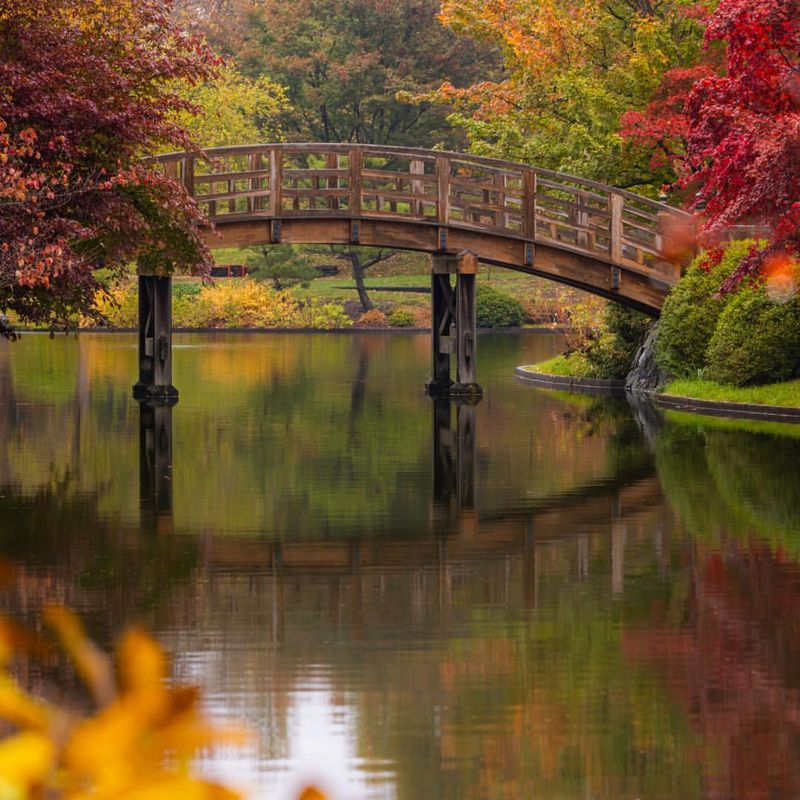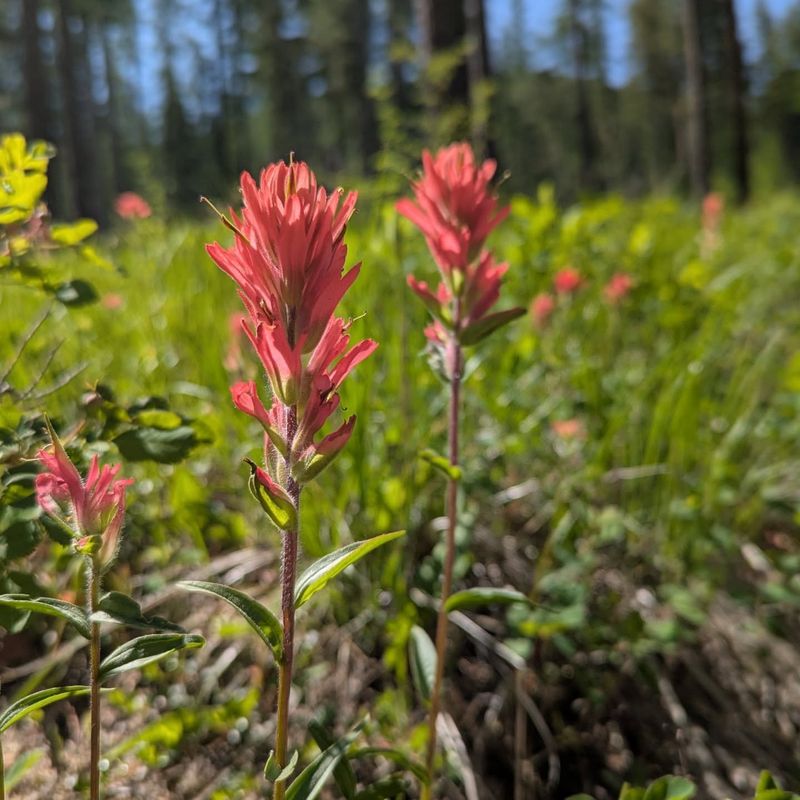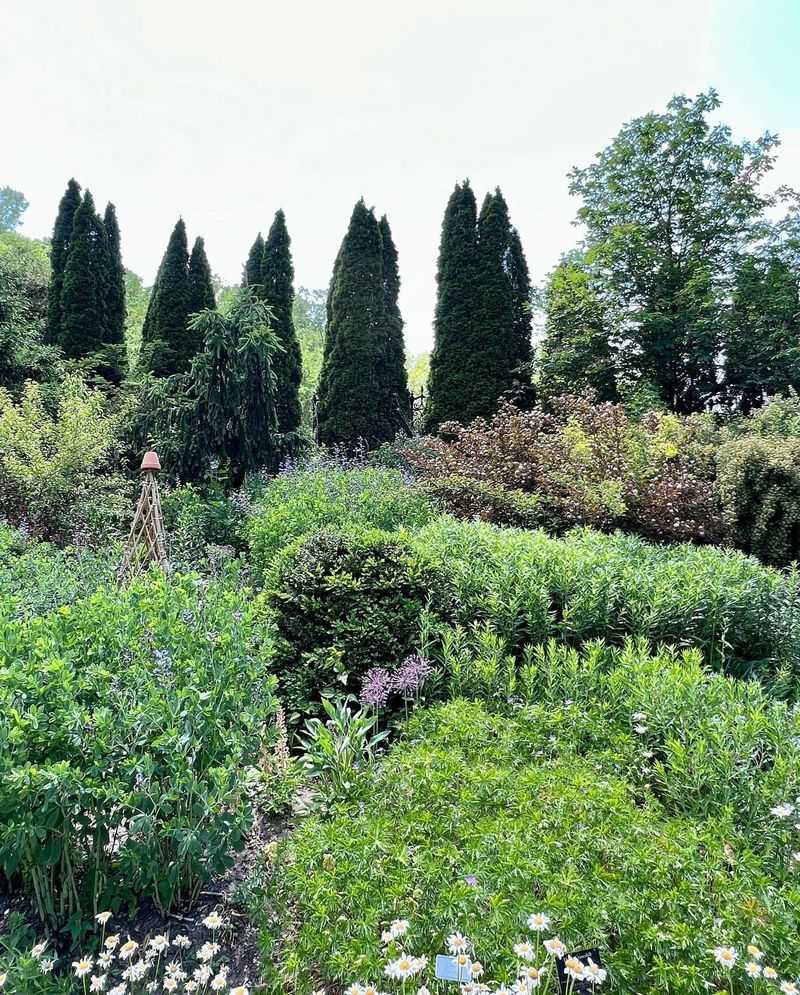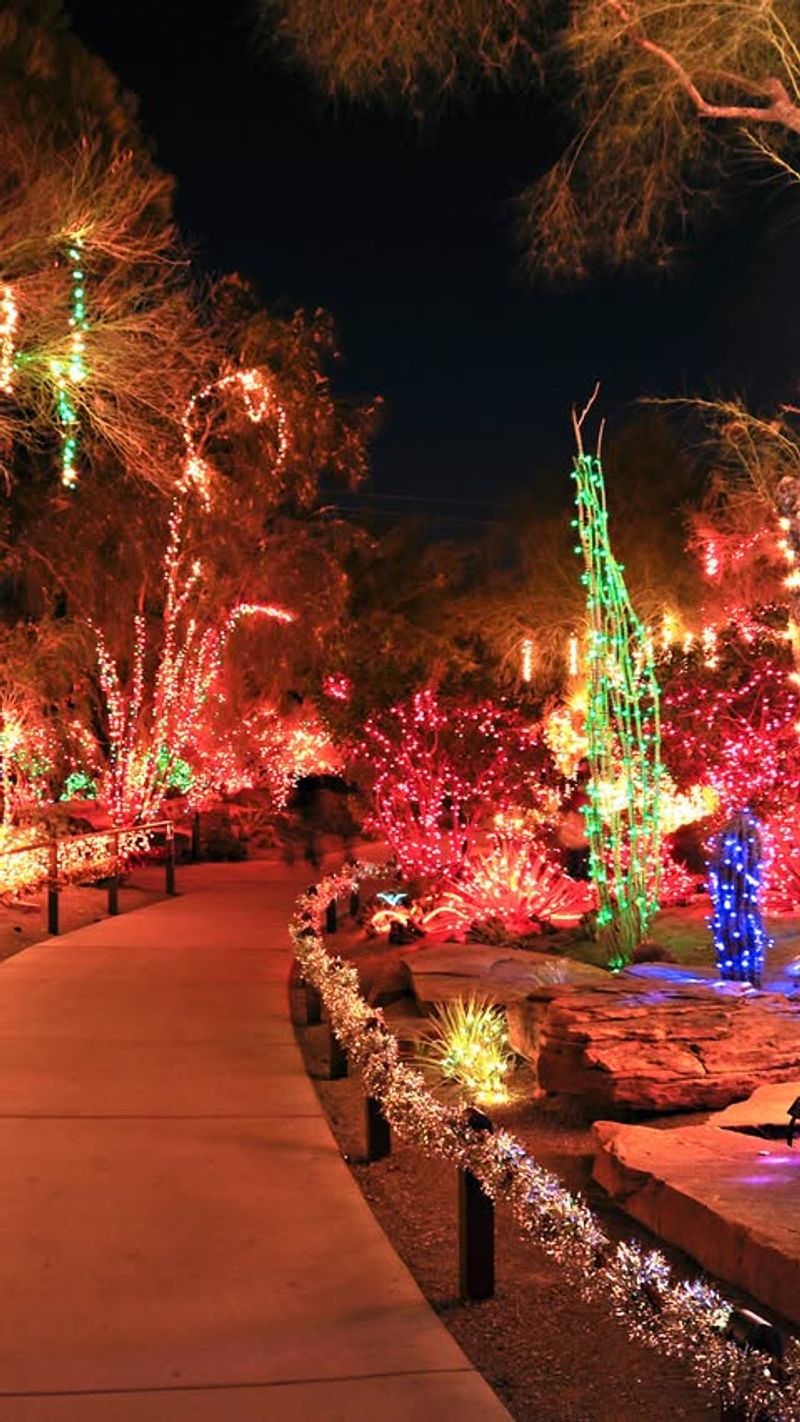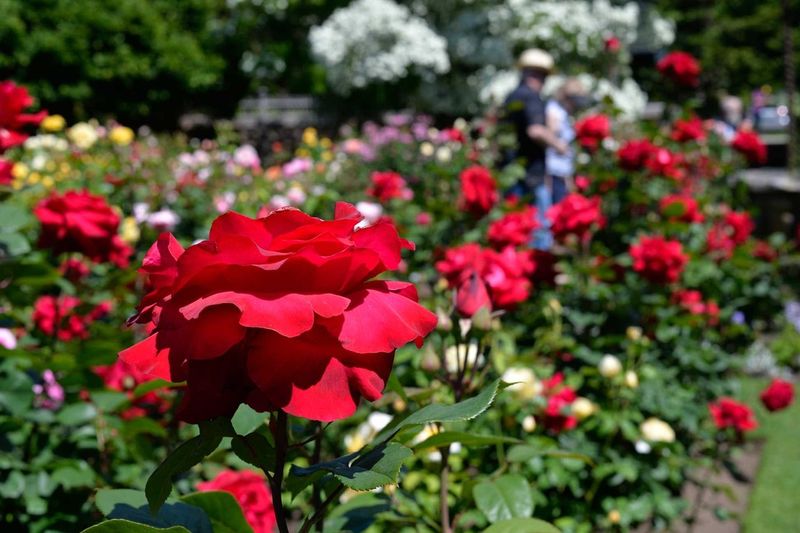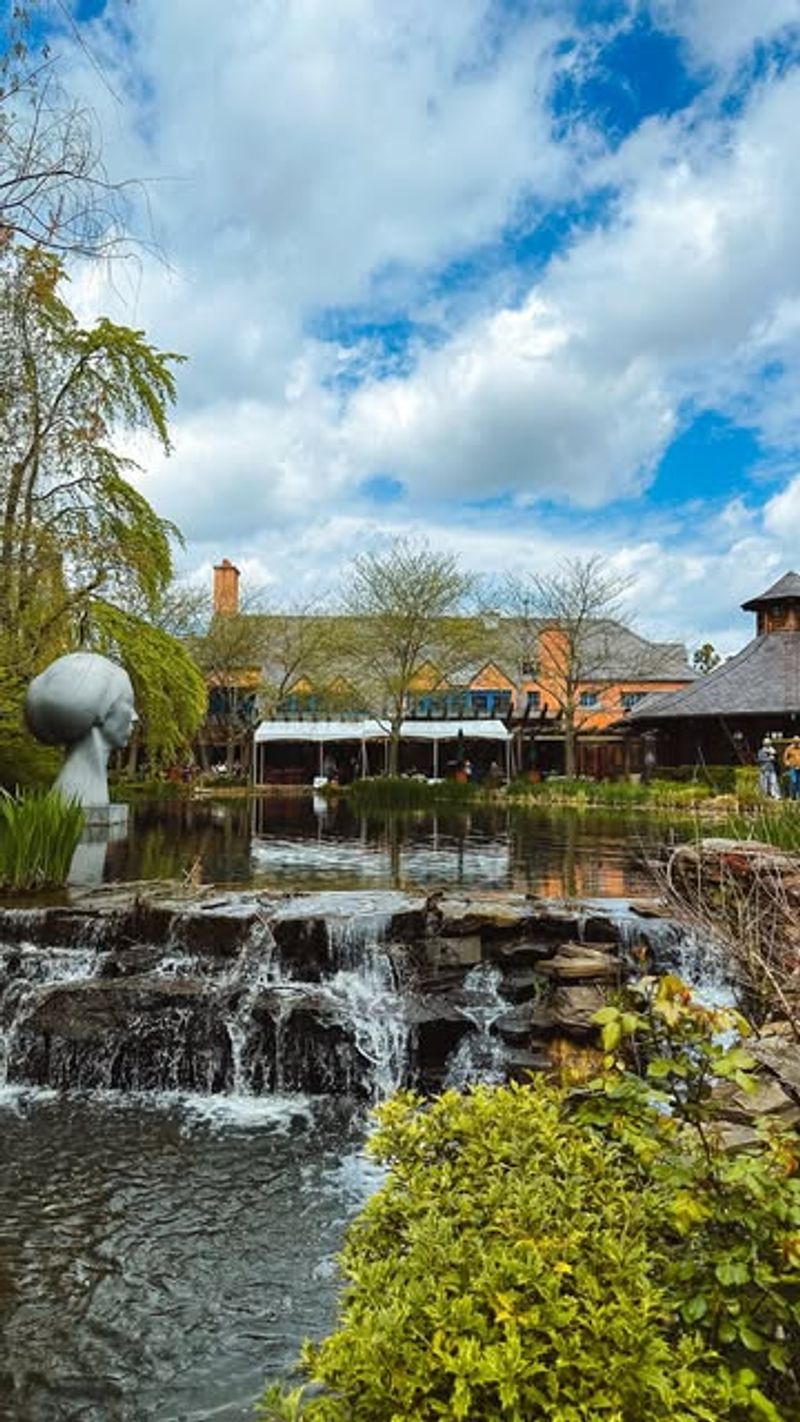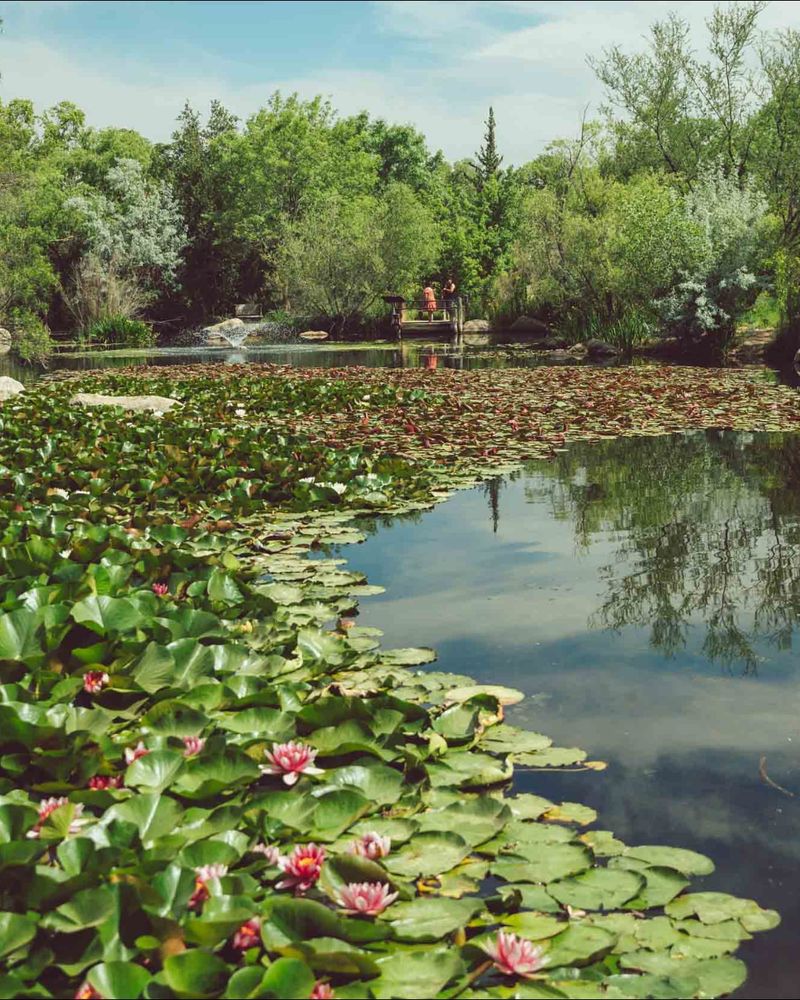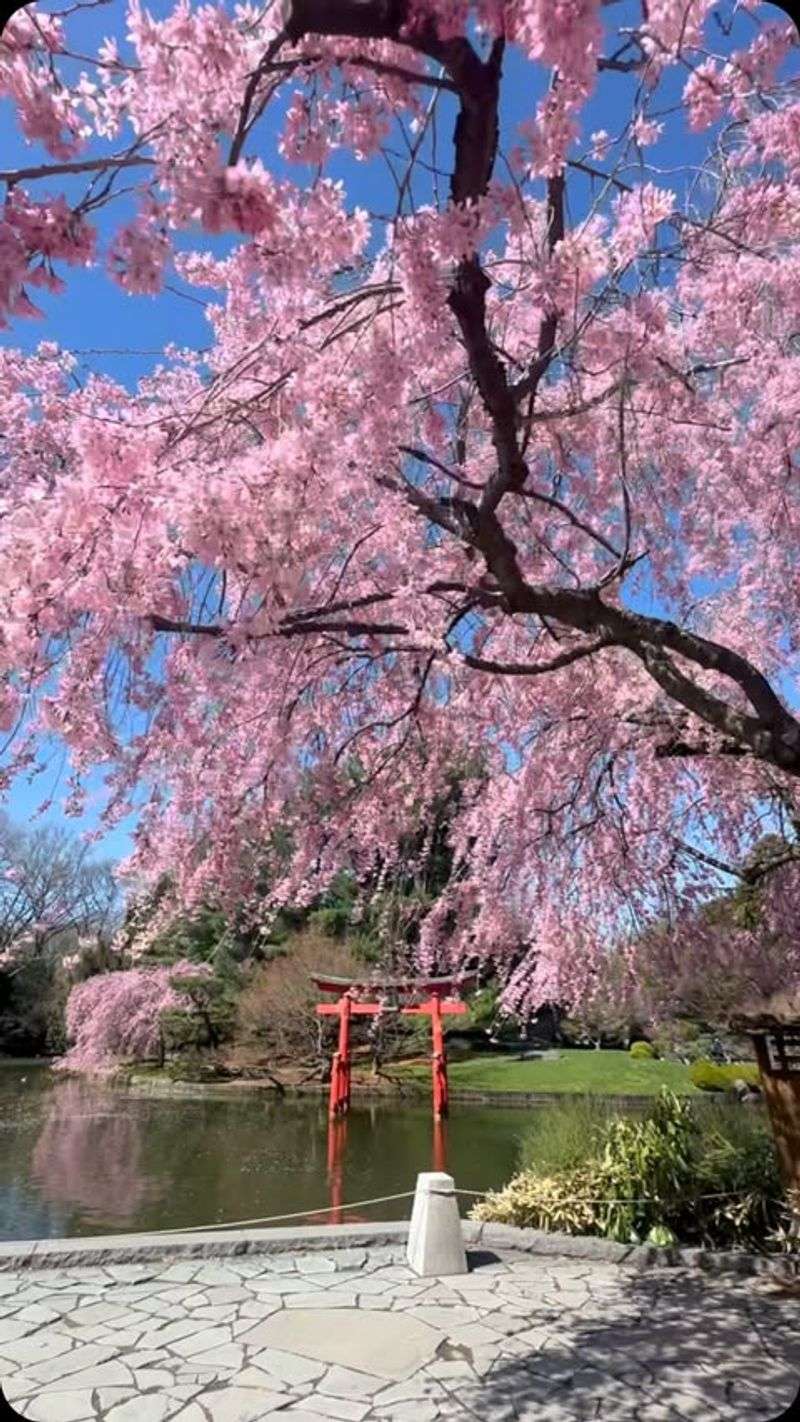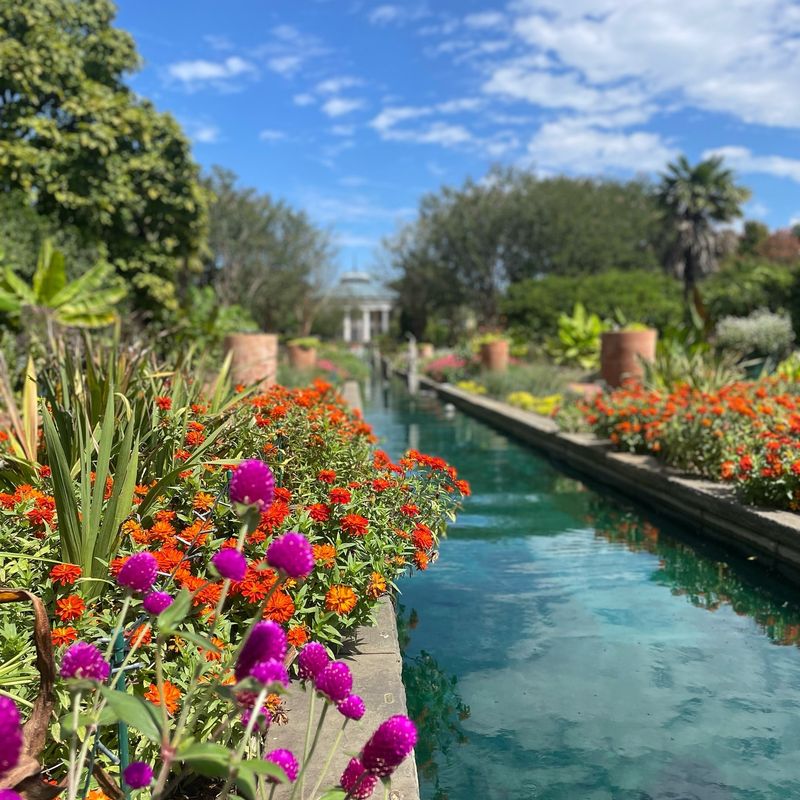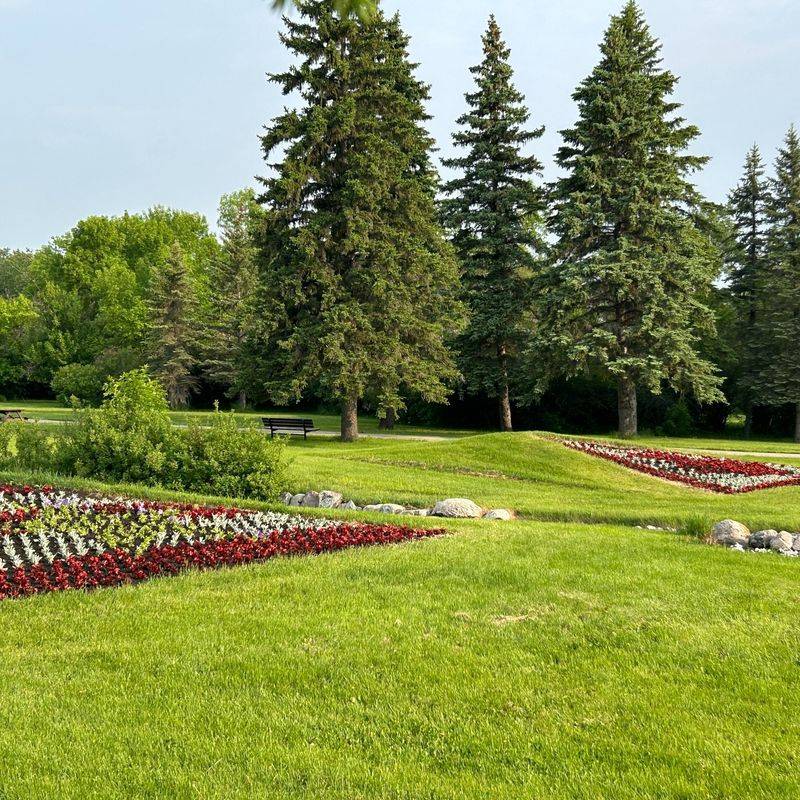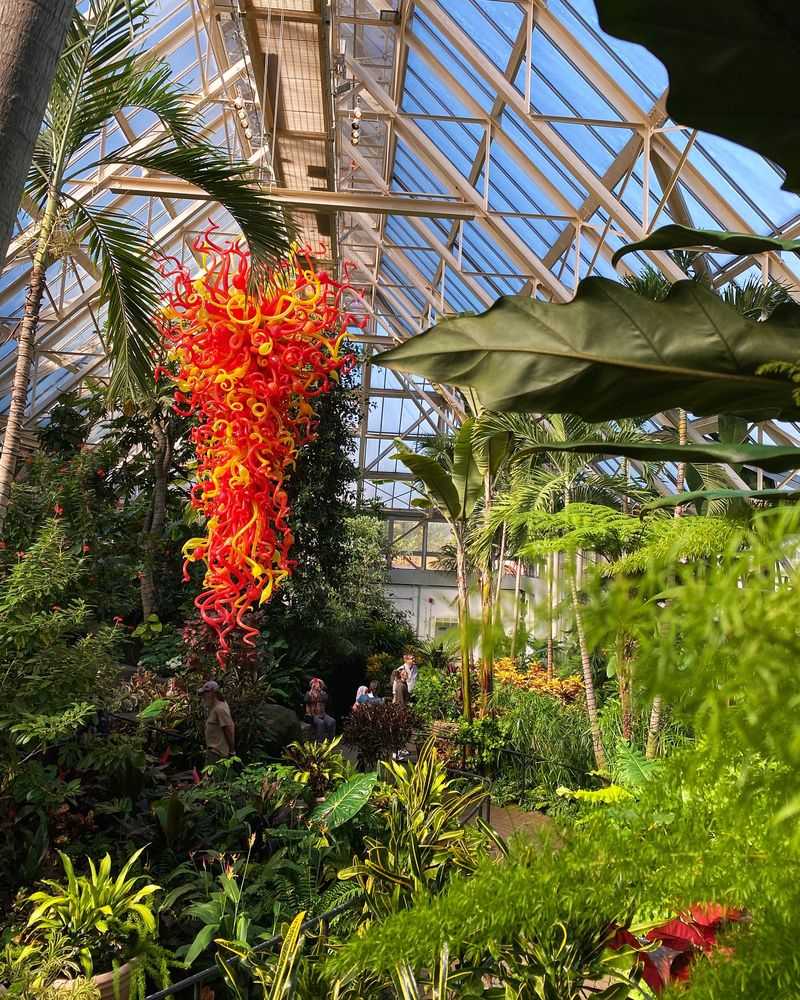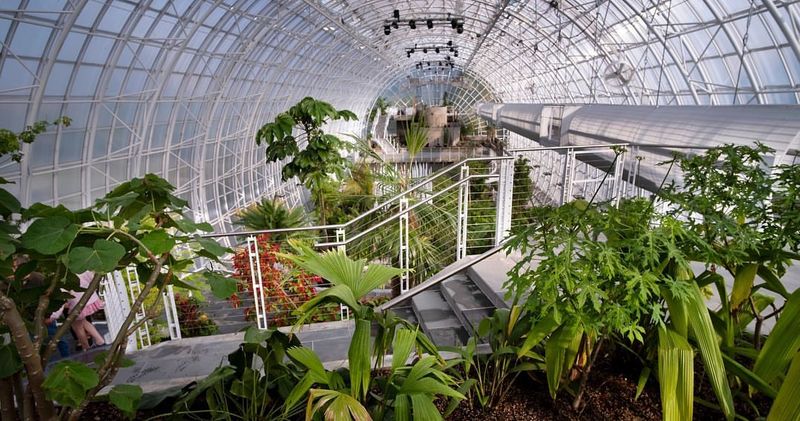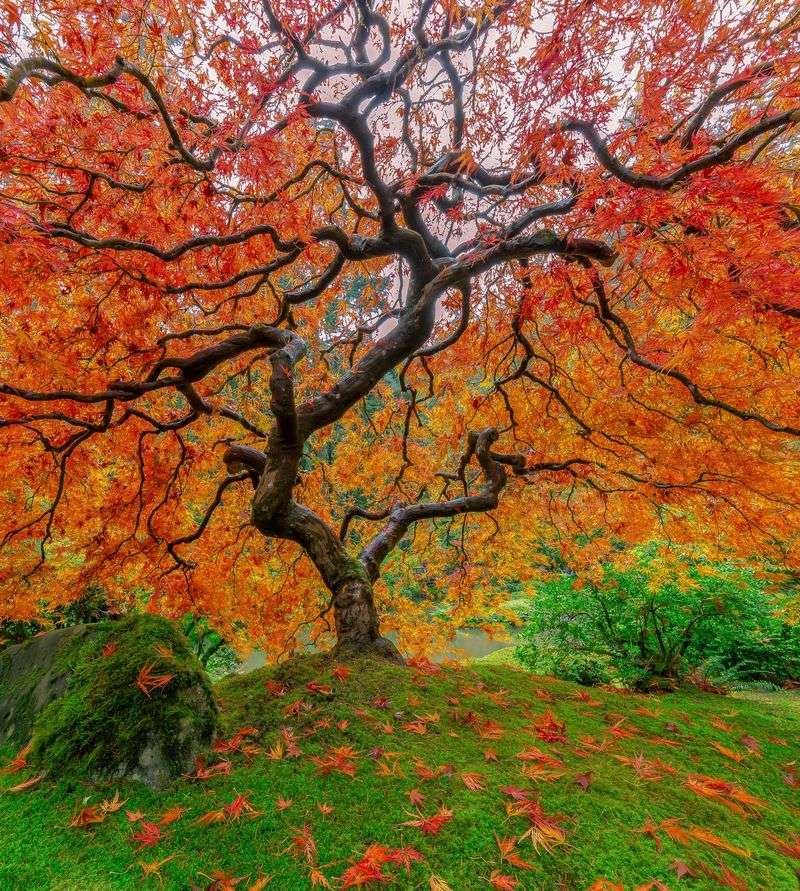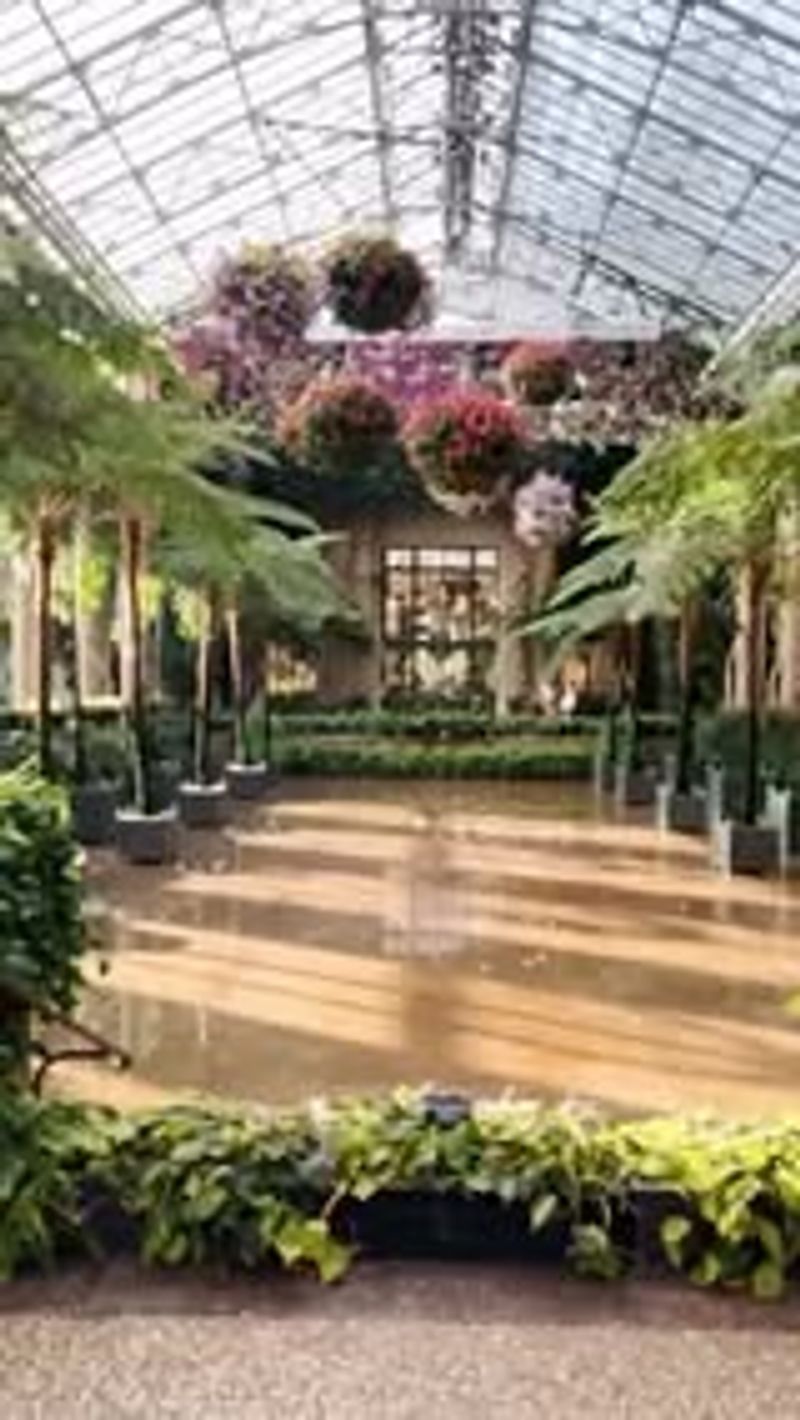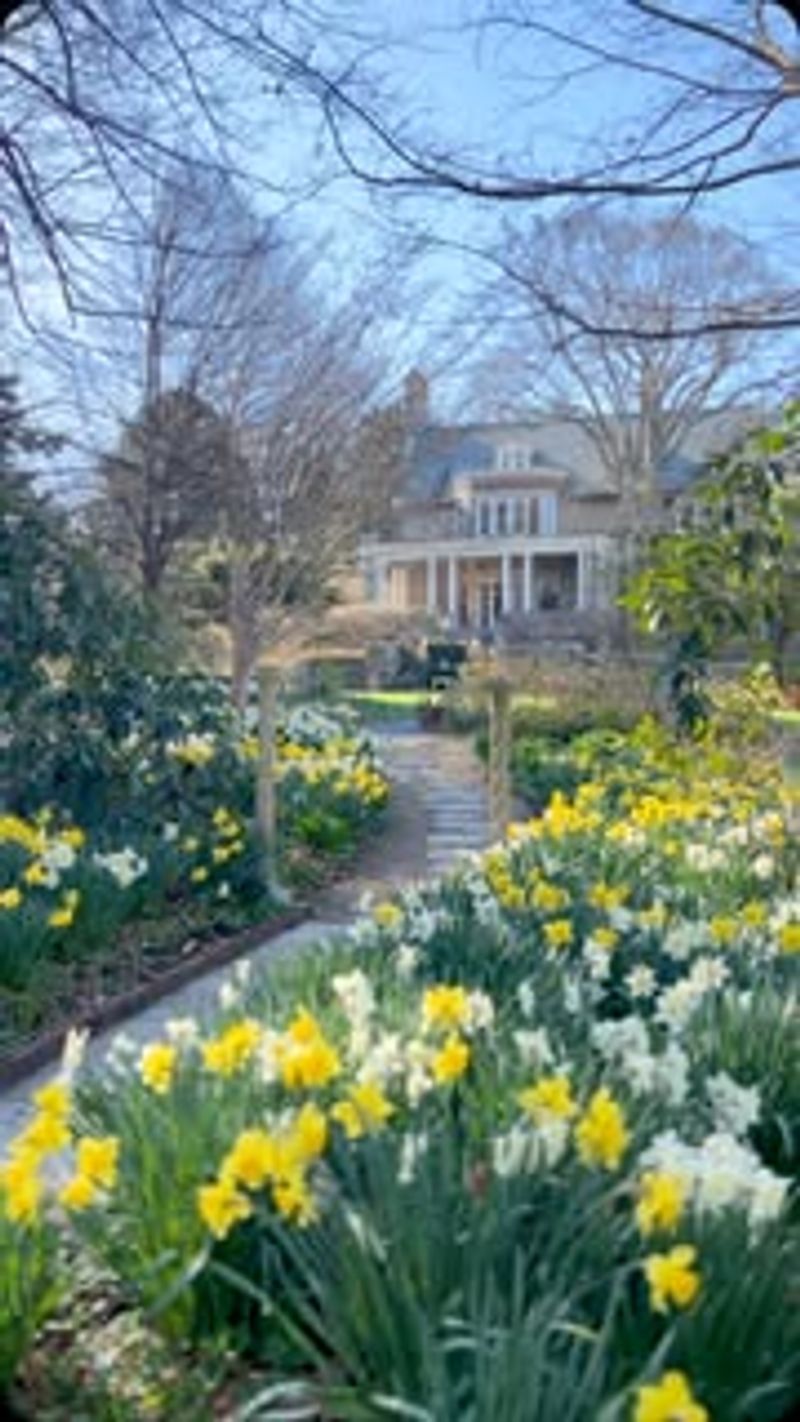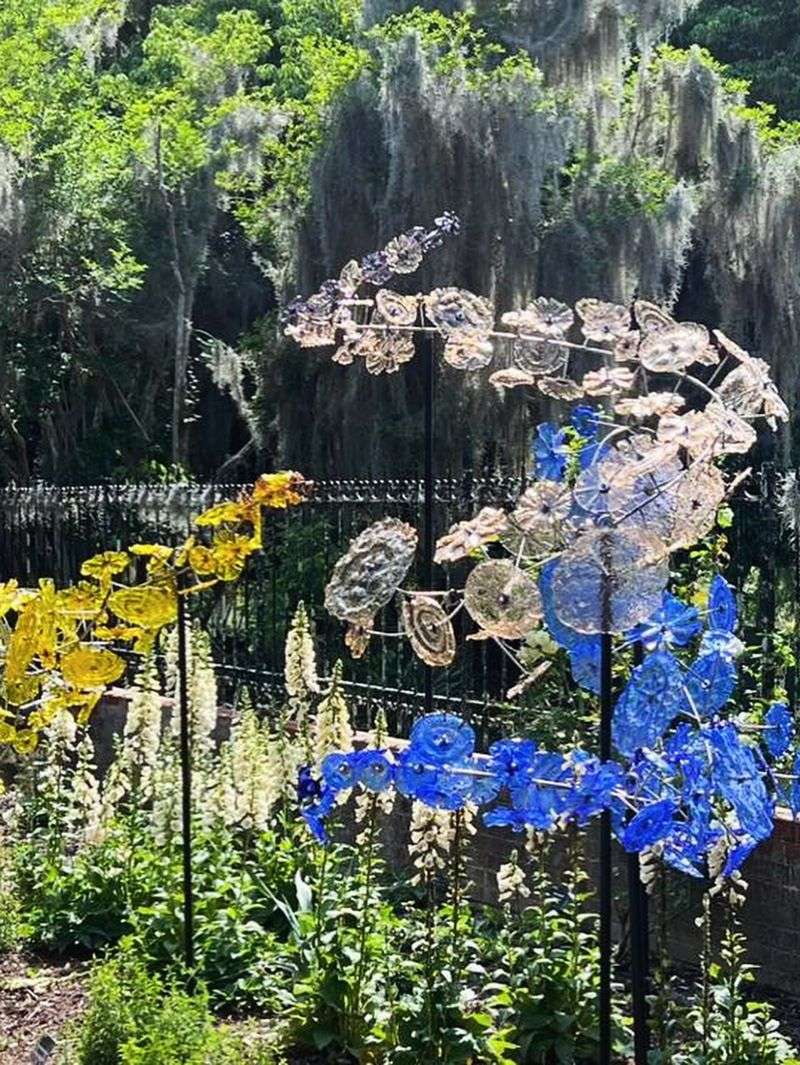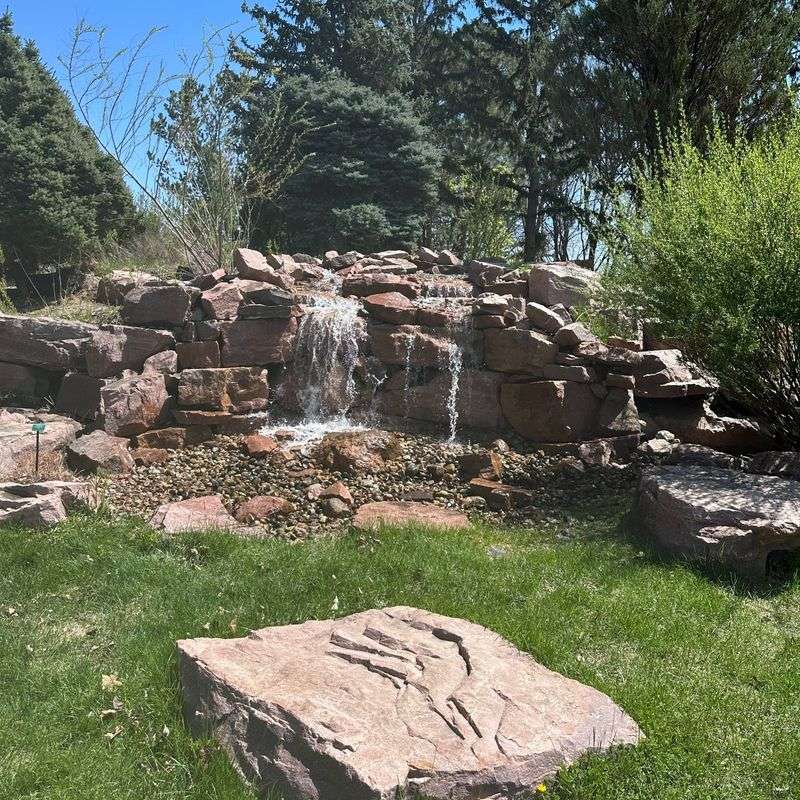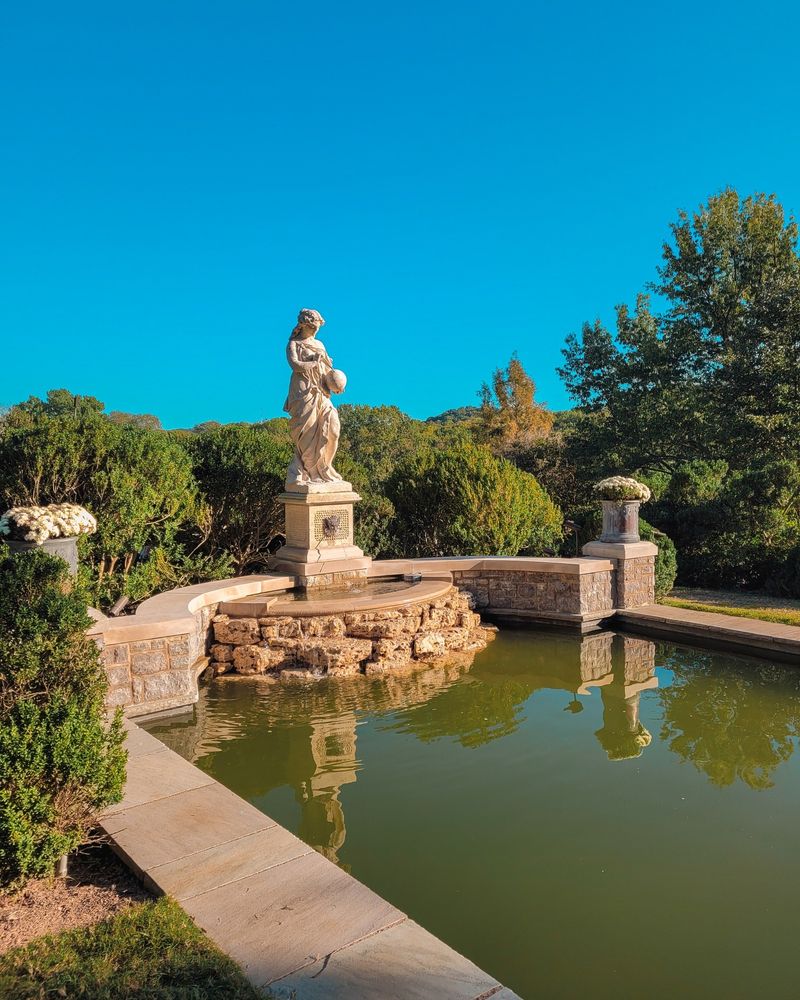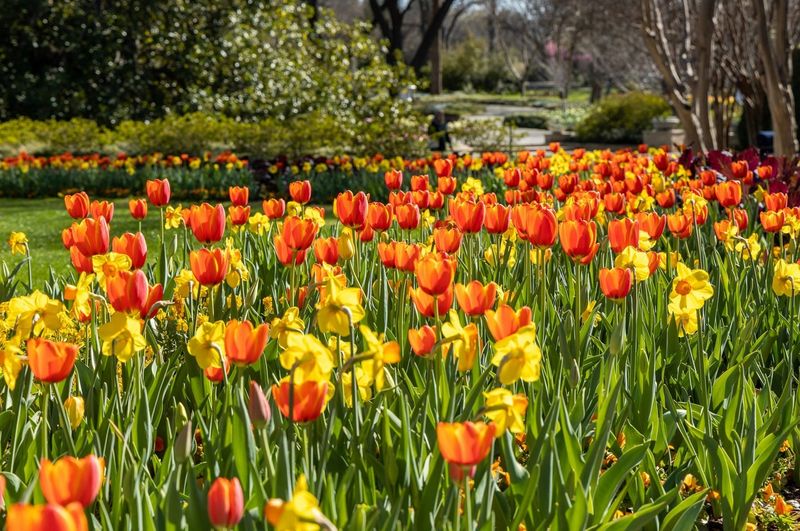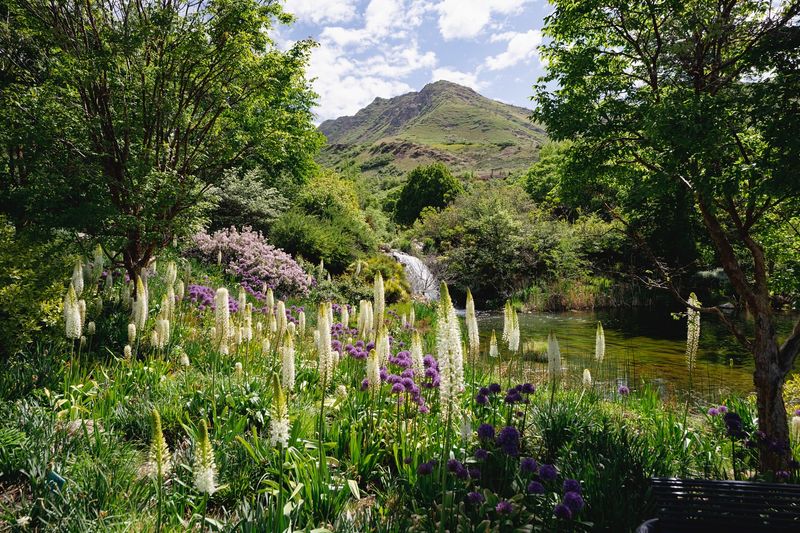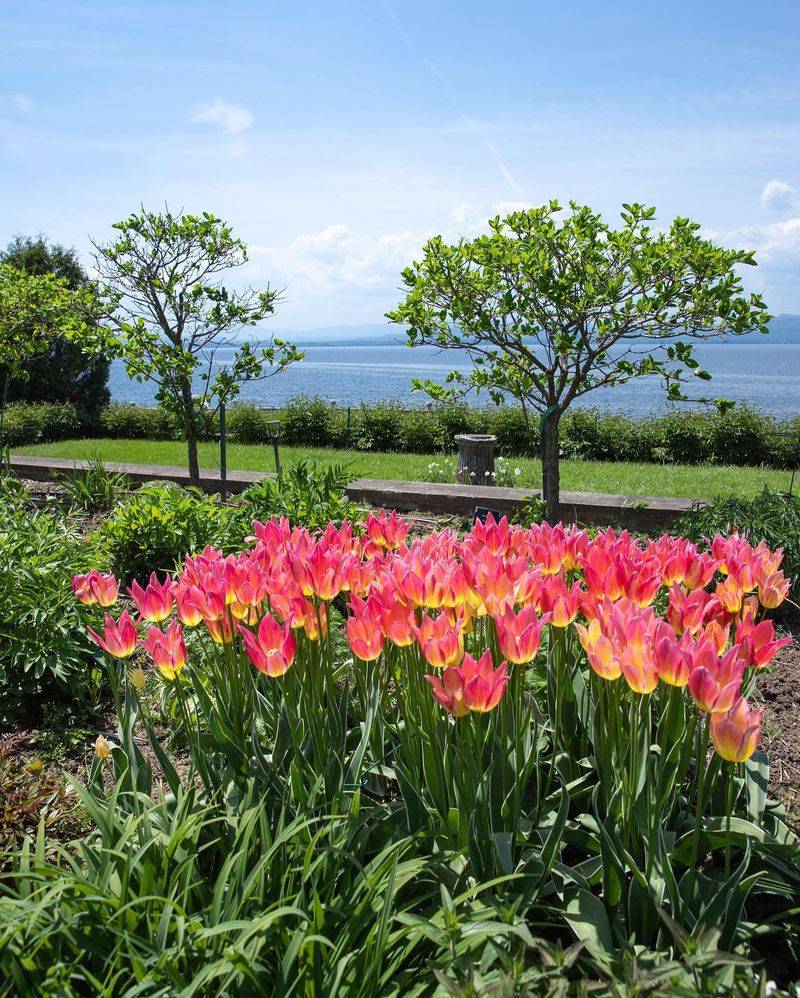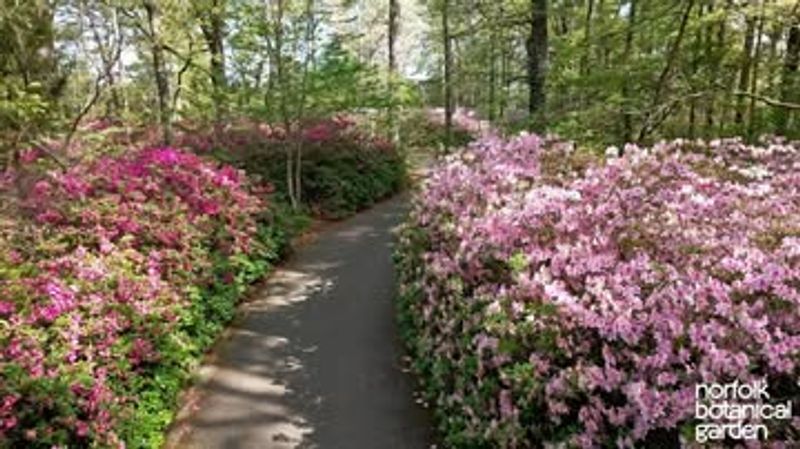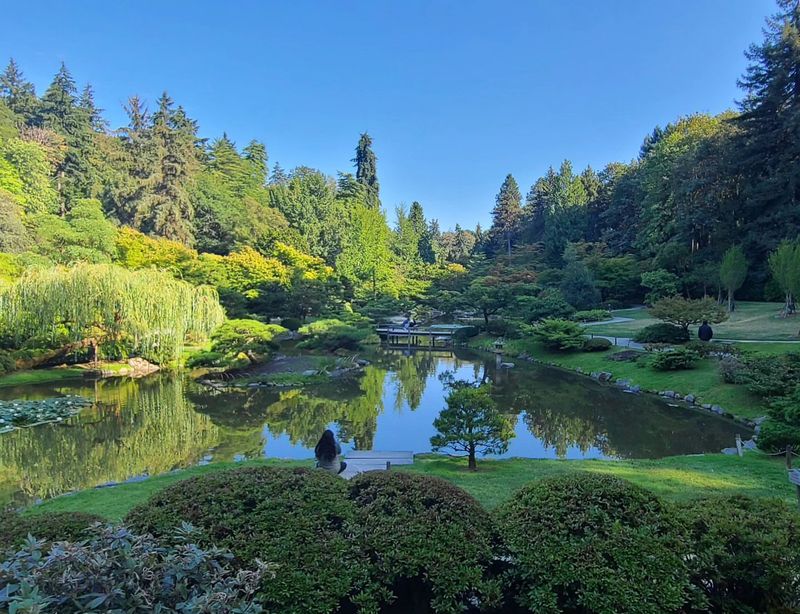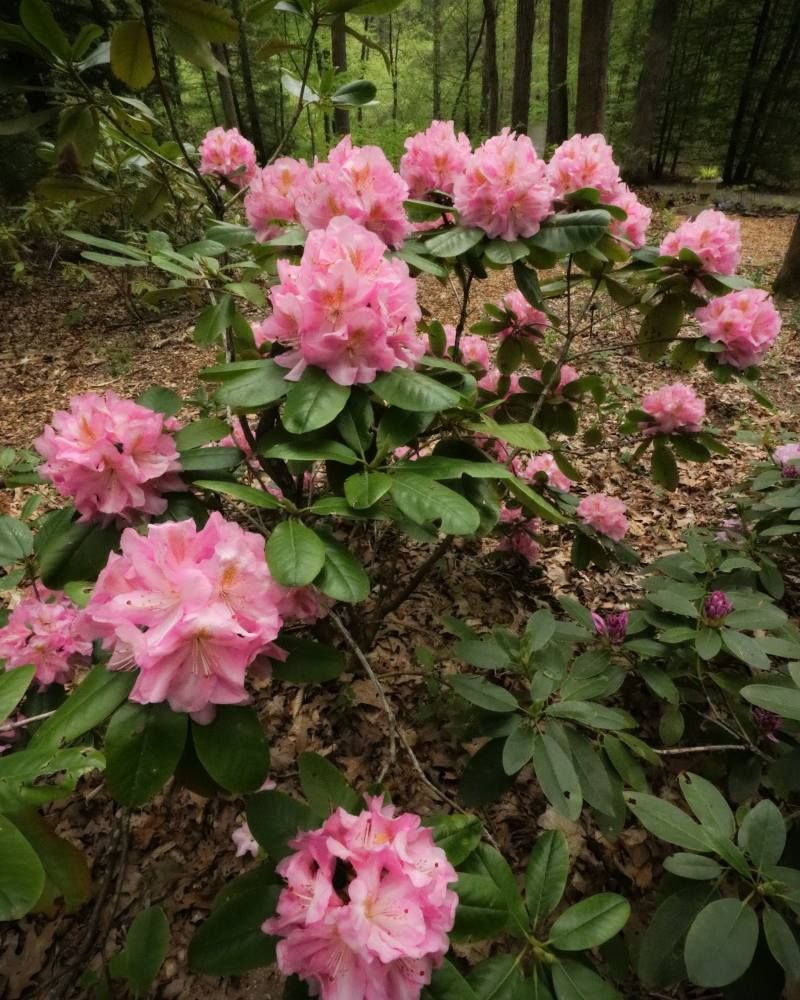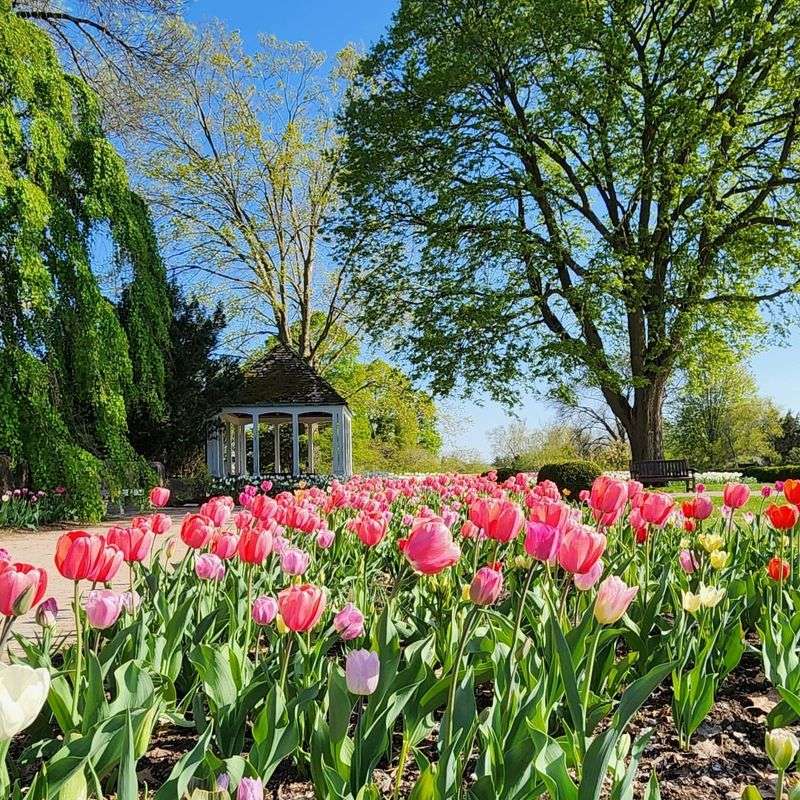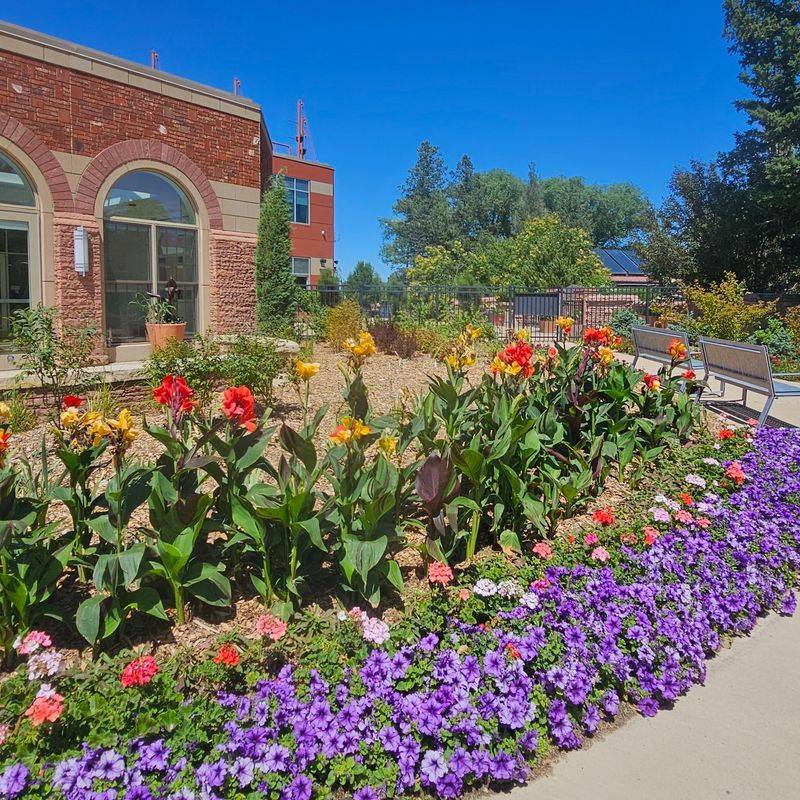Each state in the U.S. hides a garden so stunning, it could stop you in your tracks. These 50 picks aren’t just pretty—they’re iconic. Think sweeping flowerbeds, rare plants, winding trails, and postcard-worthy views.
Every garden on this list earns its place with unforgettable beauty and local charm. Prepare to meet the most gorgeous garden in every state.
1. Birmingham Botanical Gardens – Alabama
Over 67 acres of pure wonder await visitors at Birmingham’s crown jewel. Walking through feels like stepping into a living storybook where every season brings new surprises.
The Japanese Garden creates a peaceful world with its stone bridges and quiet ponds. Kids love the butterfly house, while adults appreciate the rare plant collections.
Free admission makes this garden accessible to everyone, perfect for weekend family adventures.
2. Alaska Botanical Garden – Anchorage
Despite Alaska’s harsh winters, this garden proves that beauty blooms everywhere. Summer brings an explosion of wildflowers that paint the landscape in brilliant colors.
Native plants tell the story of Alaska’s unique ecosystem. Visitors discover how plants survive extreme cold and celebrate during the brief growing season.
The herb garden surprises many with its variety, showing how northern gardeners make the most of their climate.
3. Desert Botanical Garden – Phoenix, Arizona
Cacti and desert plants create an otherworldly landscape that changes dramatically with the seasons. Spring brings unexpected blooms that transform the desert into a colorful paradise.
The garden teaches visitors about desert survival and adaptation. Interactive displays show how plants store water and protect themselves from heat.
Evening visits reveal a different side as the desert comes alive with sounds and cooler temperatures.
4. Garvan Woodland Gardens – Hot Springs, Arkansas
Nestled beside Lake Hamilton, these gardens blend water views with forest beauty. The setting creates a magical atmosphere where flowers reflect in still water.
Seasonal displays keep visitors coming back throughout the year. Spring azaleas give way to summer perennials, followed by spectacular fall colors.
The children’s garden encourages young explorers to touch, smell, and discover nature through hands-on activities and interactive features.
5. Huntington Botanical Gardens – San Marino, California
World-famous collections span 120 acres of themed gardens that transport visitors across continents. Each section tells a different story through carefully chosen plants.
The Desert Garden showcases thousands of cacti and succulents in artistic arrangements. The Japanese Garden offers tranquil moments with its authentic tea house and koi ponds.
Art galleries and libraries add cultural richness, making this destination perfect for full-day explorations.
6. Denver Botanic Gardens – Colorado
High-altitude gardening reaches new heights at this innovative space. The garden proves that beautiful plants can thrive even in challenging mountain conditions.
Native Colorado plants take center stage, showing visitors the natural beauty of their state. The alpine collection demonstrates how plants adapt to thin air and intense sunlight.
Year-round conservatories provide tropical escapes during snowy winters, creating warm havens filled with exotic blooms and butterflies.
7. Elizabeth Park Rose Garden – Hartford, Connecticut
America’s first municipal rose garden continues to enchant visitors with over 15,000 rose bushes. June brings peak blooming season when the air fills with incredible fragrance.
Historic charm meets modern horticulture in carefully maintained beds. Visitors learn about different rose varieties while enjoying peaceful walks through organized sections.
The greenhouse extends the season, offering year-round beauty and educational programs for gardening enthusiasts of all skill levels.
8. Hagley Museum Gardens – Wilmington, Delaware
Industrial history meets natural beauty along the Brandywine River. The gardens tell the story of the DuPont family while showcasing stunning horticultural displays.
Restored historic buildings provide context for the carefully planned landscapes. Visitors discover how wealthy families created private paradises in the early 1900s.
The powder mill ruins add unique character, reminding guests that beauty can emerge from industrial beginnings through careful restoration.
9. Morikami Museum Gardens – Delray Beach, Florida
Authentic Japanese garden design creates a peaceful retreat in sunny Florida. Six distinct gardens represent different periods and styles of Japanese landscape architecture.
Koi fish swim in clear ponds while visitors cross wooden bridges and discover hidden stone lanterns. The gardens change subtly with Florida’s seasons.
Cultural events and tea ceremonies add educational value, helping visitors understand the philosophy behind Japanese garden design and maintenance.
10. Atlanta Botanical Garden – Georgia
Urban oasis in the heart of Atlanta surprises visitors with its diverse plant collections. The Canopy Walk offers a bird’s-eye view of the forest from 40 feet above ground.
Seasonal exhibitions transform the garden throughout the year. Summer brings tropical displays while winter features elaborate holiday light shows.
The children’s garden encourages exploration through interactive water features and hands-on learning opportunities that make botany fun for young minds.
11. Lyon Arboretum – Honolulu, Hawaii
Tropical paradise showcases Hawaii’s incredible plant diversity in a lush rainforest setting. Over 5,000 plant species create a living laboratory for botanical research.
Native Hawaiian plants share space with exotic species from around the Pacific. Visitors learn about conservation efforts protecting Hawaii’s unique ecosystem.
The setting in Manoa Valley provides natural beauty with waterfalls and mountain views creating a magical backdrop for plant exploration.
12. Idaho Botanical Garden – Boise
Water-wise gardening takes center stage in this innovative space designed for Idaho’s climate. The garden proves that drought-tolerant plants can create stunning displays.
Native Idaho plants demonstrate natural beauty while teaching visitors about local ecosystems. The rose garden provides traditional beauty alongside modern sustainable practices.
Educational programs focus on practical gardening techniques that work in Idaho’s challenging growing conditions and variable weather patterns.
13. Chicago Botanic Garden – Glencoe, Illinois
Twenty-seven gardens spread across 385 acres create endless exploration opportunities. Each themed area offers different experiences, from formal rose gardens to prairie landscapes.
The Japanese Garden provides authentic design with islands connected by bridges. Visitors find peace among carefully placed stones and flowing water.
Year-round programming includes classes, exhibitions, and festivals that celebrate gardening, nature, and seasonal changes in the Chicago area.
14. White River Gardens – Indianapolis, Indiana
Connected to the Indianapolis Zoo, these gardens showcase plants from around the world. The conservatory houses tropical species that thrive year-round in climate-controlled environments.
Outdoor gardens change with Indiana’s seasons, providing four-season interest for repeat visitors. The wedding garden creates romantic settings with carefully chosen flowers.
Educational programs connect plants with animal habitats, helping visitors understand how gardens support wildlife and ecosystem health.
15. Dubuque Arboretum – Iowa
Community volunteers have created something special in this grassroots garden. Local dedication shows in every carefully tended bed and thoughtfully chosen plant.
The hosta garden provides shade-loving beauty while the rose garden offers classic charm. Seasonal displays reflect Iowa’s growing season and climate.
Free admission and volunteer opportunities make this garden accessible to everyone, encouraging community involvement and shared appreciation for natural beauty.
16. Botanica Wichita – Kansas
Prairie meets cultivation in this garden that celebrates Kansas’s natural heritage. Native grasses and wildflowers show the beauty of the Great Plains ecosystem.
The butterfly garden attracts colorful visitors throughout the growing season. Children’s areas encourage hands-on learning about plants and their role in nature.
Seasonal events celebrate Kansas culture and agriculture, connecting visitors with their local environment and the importance of plant conservation.
17. Yew Dell Botanical Gardens – Crestwood, Kentucky
Former nursery transformed into a public garden showcases unusual plants and creative design. The collection includes rare specimens not found in typical gardens.
Topiary art creates whimsical shapes that delight visitors of all ages. The secret garden provides intimate spaces for quiet reflection.
Educational programs focus on plant propagation and garden design, teaching visitors practical skills they can use in their own landscapes.
18. New Orleans Botanical Garden – Louisiana
Art Deco architecture meets tropical plants in this unique urban garden. The historic buildings provide elegant backdrops for lush plant displays.
Sculpture gardens combine art with nature, creating inspiring spaces for contemplation. The conservatory houses orchids and other tropical treasures.
The setting in City Park provides additional recreation opportunities, making this garden part of a larger urban oasis experience.
19. Coastal Maine Botanical Gardens – Boothbay
Rugged coastline meets cultivated beauty in this spectacular seaside setting. Ocean views provide dramatic backdrops for carefully designed plant collections.
Native Maine plants demonstrate how gardens can work with natural landscapes. The children’s garden encourages exploration through interactive features and nature play.
Seasonal programming celebrates Maine’s maritime culture while teaching visitors about coastal ecology and plant adaptation to seaside conditions.
20. Brookside Gardens – Wheaton, Maryland
Fifty acres of themed gardens provide year-round beauty near Washington D.C. Each season brings new highlights, from spring bulbs to fall foliage displays.
The conservatory extends the growing season with tropical plants and seasonal flower shows. Visitors enjoy climate-controlled comfort while exploring exotic species.
Educational programs serve the metropolitan area with classes and workshops that help urban gardeners succeed in their own spaces.
21. Mount Auburn Cemetery – Cambridge, Massachusetts
Historic cemetery doubles as one of America’s first public gardens. Ancient trees and historic monuments create a unique atmosphere for peaceful walks.
Spring brings incredible displays of flowering trees and bulbs. The arboretum collection includes specimens planted over 150 years ago.
Birdwatching opportunities attract nature lovers who come to see migrating species among the mature trees and varied plant collections.
22. Frederik Meijer Gardens – Grand Rapids, Michigan
Sculpture and plants combine to create artistic landscapes that inspire visitors. The tropical conservatory houses the largest public collection of butterflies in Michigan.
Outdoor gardens showcase plants that thrive in Michigan’s climate. The children’s garden provides hands-on learning through interactive water features and play areas.
Year-round programming includes art exhibitions, concerts, and educational workshops that celebrate the connection between art, nature, and community.
23. Minnesota Landscape Arboretum – Chaska
University research facility opens its doors to showcase plants that survive Minnesota’s harsh winters. The collection demonstrates cold-hardy gardening at its finest.
Seasonal displays celebrate Minnesota’s dramatic weather changes. Spring ephemerals give way to summer perennials, followed by spectacular fall color shows.
Educational programs teach practical skills for northern gardeners, helping visitors succeed with plants that can handle extreme temperature variations.
24. Mississippi Agriculture Museum Gardens – Jackson
Agricultural heritage comes alive through historic farm buildings and heritage plant varieties. Visitors discover how Mississippi families grew food and flowers generations ago.
Heritage vegetables and old-fashioned flowers demonstrate sustainable growing practices. The herb garden showcases plants used for cooking and medicine.
Educational programs connect modern visitors with traditional farming wisdom, teaching skills that remain relevant for today’s home gardeners.
25. Missouri Botanical Garden – St. Louis
One of America’s oldest botanical gardens continues to lead in plant research and education. The Climatron conservatory houses rainforest plants in a geodesic dome.
Japanese Garden provides authentic design with a traditional tea house and carefully placed stones. The rose garden showcases hundreds of varieties.
World-class research programs advance botanical knowledge while public gardens inspire visitors to appreciate and protect plant diversity.
26. Memorial Rose Garden – Missoula, Montana
Mountain setting creates a dramatic backdrop for over 2,500 rose bushes. The garden honors veterans while providing beauty for the entire community.
High-altitude growing conditions produce incredibly fragrant blooms during Montana’s short but intense growing season. Visitors time visits for peak June blooming.
Community volunteers maintain this memorial garden, demonstrating how shared efforts can create lasting beauty that honors service and sacrifice.
27. Lauritzen Gardens – Omaha, Nebraska
Missouri River location provides natural beauty enhanced by carefully planned gardens. The conservatory showcases tropical plants year-round in climate-controlled comfort.
Native prairie plants demonstrate Nebraska’s natural heritage. The rose garden provides classic beauty while the herb garden offers practical growing ideas.
Educational programs focus on Great Plains gardening, teaching visitors how to work with Nebraska’s challenging climate and soil conditions.
28. Ethel M Chocolate Factory Gardens – Henderson, Nevada
Desert botanical garden surrounds a working chocolate factory, creating an unexpected combination of sweet treats and natural beauty. The cactus collection thrives in Nevada’s dry climate.
Holiday light displays transform the garden into a winter wonderland. Thousands of lights illuminate cacti and desert plants in magical ways.
Visitors combine garden tours with chocolate factory visits, making this destination perfect for families seeking unique experiences.
29. Fuller Gardens – North Hampton, New Hampshire
Formal garden design meets New England charm in this carefully maintained estate garden. The rose garden provides classic beauty with over 2,000 plants.
Seasonal displays change throughout New England’s four distinct seasons. Spring bulbs give way to summer perennials, followed by spectacular fall foliage.
The Japanese garden offers peaceful contrast with its simple design and natural materials, providing quiet spaces for contemplation.
30. Grounds For Sculpture – Hamilton, New Jersey
Contemporary sculpture meets horticultural artistry in this unique 42-acre park. Art installations change seasonally, creating new discoveries with each visit.
Landscaping complements sculptures while providing independent beauty. Plant choices enhance artistic installations while creating cohesive garden spaces.
Interactive art encourages visitor participation, making this destination appealing to art lovers and garden enthusiasts seeking creative inspiration.
31. ABQ BioPark Botanic Garden – Albuquerque, New Mexico
High desert climate supports unique plant collections that thrive in New Mexico’s challenging conditions. The conservatory provides tropical contrast to desert landscapes.
Native plants demonstrate natural beauty while teaching visitors about desert ecosystems. The herb garden showcases plants used in traditional southwestern cuisine.
Connection to the zoo creates educational opportunities about plant-animal relationships and ecosystem interdependence in desert environments.
32. Brooklyn Botanic Garden – New York
Urban oasis in the heart of Brooklyn provides green space for millions of city residents. The Japanese Hill-and-Pond Garden creates authentic tranquility.
Cherry blossoms draw crowds each spring when the garden transforms into a pink paradise. The rose garden provides summer beauty in formal settings.
Educational programs serve diverse urban communities, teaching city gardening skills and connecting urban residents with nature and plant science.
33. Daniel Stowe Botanical Garden – Belmont, North Carolina
Southern charm meets botanical excellence in this 380-acre garden paradise. The conservatory houses tropical plants year-round while outdoor gardens celebrate Carolina’s seasons.
Native plants showcase North Carolina’s natural heritage. The orchid collection provides exotic beauty while educational programs teach practical gardening skills.
Lake Wylie provides water views that enhance the garden experience, creating peaceful settings for contemplation and nature photography.
34. International Peace Garden – Dunseith, North Dakota
Straddling the US-Canada border, this garden symbolizes international friendship through shared natural beauty. Formal gardens represent both nations’ horticultural traditions.
Prairie plants demonstrate the natural heritage of the Great Plains. The conservatory provides year-round beauty despite North Dakota’s harsh winters.
Peace Tower and monuments add historical significance, making this garden a destination for both nature lovers and those seeking cultural understanding.
35. Franklin Park Conservatory – Columbus, Ohio
Glass architecture houses world-class plant collections in climate-controlled environments. The conservatory showcases plants from different global ecosystems year-round.
Outdoor gardens complement indoor displays with Ohio-hardy plants. The children’s garden encourages hands-on learning through interactive features and educational programs.
Art installations enhance the botanical experience, creating connections between natural beauty and human creativity throughout the facility.
36. Myriad Botanical Gardens – Oklahoma City, Oklahoma
Urban renewal project transformed downtown Oklahoma City with this innovative garden space. The Crystal Bridge Conservatory houses tropical plants in a stunning glass structure.
Children’s garden provides interactive learning opportunities in the heart of the city. Water features and play areas make this destination family-friendly.
Downtown location makes the garden accessible to workers and visitors, providing green space and natural beauty in an urban environment.
37. Portland Japanese Garden – Oregon
Authentic Japanese design creates one of the most beautiful gardens outside of Japan. Five traditional garden styles demonstrate different aspects of Japanese landscape philosophy.
Seasonal changes provide year-round beauty with cherry blossoms, summer greens, fall colors, and winter structure. Each visit reveals new details and perspectives.
Cultural programs teach visitors about Japanese aesthetics and gardening principles, creating deeper understanding of this ancient art form.
38. Longwood Gardens – Kennett Square, Pennsylvania
World-famous gardens showcase horticultural excellence across 1,100 acres of stunning displays. The conservatory houses the largest pipe organ in a garden setting.
Fountain shows combine water, music, and lights in spectacular evening performances. Seasonal displays transform the gardens throughout the year.
Educational programs and research advance botanical knowledge while inspiring millions of visitors to appreciate and protect plant diversity worldwide.
39. Blithewold Mansion Gardens – Bristol, Rhode Island
Historic mansion gardens overlook Narragansett Bay, combining formal design with waterfront beauty. The 33-acre estate showcases early 20th-century landscape design.
Seasonal displays include spring bulbs, summer perennials, and fall foliage. The bamboo grove provides exotic contrast to traditional New England plantings.
Historic house tours complement garden visits, showing how wealthy families integrated indoor and outdoor living spaces in elegant estate settings.
40. Brookgreen Gardens – Murrells Inlet, South Carolina
Sculpture garden and wildlife preserve combine to create a unique cultural landscape. Over 2,000 sculptures by American artists enhance natural garden settings.
Native plants provide habitats for local wildlife while creating beautiful displays. The butterfly garden attracts colorful visitors throughout the growing season.
Educational programs connect art, nature, and history, teaching visitors about Lowcountry culture and the importance of preserving natural and artistic heritage.
41. McCrory Gardens – Brookings, South Dakota
University research gardens showcase plants that survive South Dakota’s extreme weather conditions. The collection demonstrates cold-hardy gardening for northern climates.
Rose garden features varieties selected for prairie conditions. The children’s garden provides hands-on learning opportunities through interactive features and educational programs.
Seasonal displays celebrate South Dakota’s short but intense growing season, helping visitors make the most of challenging gardening conditions.
42. Cheekwood Estate Gardens – Nashville, Tennessee
Historic mansion and gardens combine art, history, and horticulture in a stunning estate setting. The 55-acre botanical garden showcases Tennessee’s natural beauty.
Seasonal displays include spring wildflowers, summer perennials, and spectacular fall foliage. The sculpture trail adds artistic elements throughout the landscape.
Museum collections complement garden visits, creating connections between fine art and natural beauty in an elegant historic setting.
43. Dallas Arboretum – Texas
Spectacular seasonal displays transform 66 acres into constantly changing works of art. Spring brings millions of azaleas and tulips in coordinated color schemes.
White Rock Lake provides beautiful water views that enhance garden experiences. The children’s garden encourages exploration through interactive features and nature play.
Educational programs teach Texas gardening techniques, helping visitors succeed with plants that can handle extreme heat and variable rainfall.
44. Red Butte Garden – Salt Lake City, Utah
Mountain setting provides dramatic backdrops for plants adapted to Utah’s unique climate. The garden demonstrates water-wise gardening principles for western conditions.
Native plants showcase Utah’s natural heritage while teaching visitors about high-desert ecosystems. The fragrance garden provides sensory experiences for all visitors.
Educational programs focus on sustainable gardening practices that work in Utah’s challenging climate with limited water resources.
45. Shelburne Farms – Vermont
Working farm and historic estate combine agriculture with ornamental gardening. The 1,400-acre property showcases sustainable farming practices alongside beautiful landscapes.
Formal gardens complement farm buildings and pastoral views. Visitors learn about the connection between food production and ornamental horticulture.
Educational programs teach sustainable living practices while celebrating Vermont’s agricultural heritage and the importance of preserving working landscapes.
46. Norfolk Botanical Garden – Virginia
155 acres of themed gardens provide year-round beauty in Virginia’s moderate climate. The azalea garden creates spectacular spring displays with thousands of blooms.
Boat tours offer unique perspectives on waterfront gardens. The butterfly garden attracts colorful visitors while the herb garden provides practical growing ideas.
Educational programs serve the Hampton Roads community, teaching gardening skills and connecting urban residents with nature and plant science.
47. Washington Park Arboretum – Seattle, Washington
Pacific Northwest climate supports incredible plant diversity in this 230-acre living laboratory. The Japanese Garden provides authentic design with traditional elements.
Rhododendrons and azaleas create spectacular spring displays. The waterfront trail offers views of Lake Washington while showcasing native plants.
Research programs advance botanical knowledge while public gardens inspire visitors to appreciate and protect the Pacific Northwest’s unique plant communities.
48. West Virginia Botanic Garden – Morgantown
Mountain state beauty shines in this developing garden that showcases plants adapted to Appalachian conditions. Native wildflowers demonstrate the region’s natural heritage.
Volunteer efforts create community connections while building garden infrastructure. The herb garden provides practical growing ideas for mountain gardeners.
Educational programs teach sustainable gardening practices that work in West Virginia’s challenging terrain and variable mountain weather conditions.
49. Boerner Botanical Gardens – Hales Corners, Wisconsin
Formal garden design meets Wisconsin’s natural beauty in this carefully planned space. The rose garden provides classic beauty with hundreds of varieties.
Seasonal displays celebrate Wisconsin’s four distinct seasons. The herb garden demonstrates practical growing while the perennial garden shows long-term planning.
Educational programs teach Wisconsin gardening techniques, helping visitors succeed with plants that can handle harsh winters and variable growing conditions.
50. Cheyenne Botanic Gardens – Wyoming
High Plains gardening reaches new heights in this innovative solar-heated conservatory. The facility demonstrates sustainable growing practices for Wyoming’s challenging climate.
Native plants showcase Wyoming’s natural heritage while teaching visitors about high-altitude ecosystems. The children’s garden encourages exploration through interactive features.
Community programs connect residents with gardening opportunities, proving that beautiful gardens can thrive even in Wyoming’s harsh conditions.

